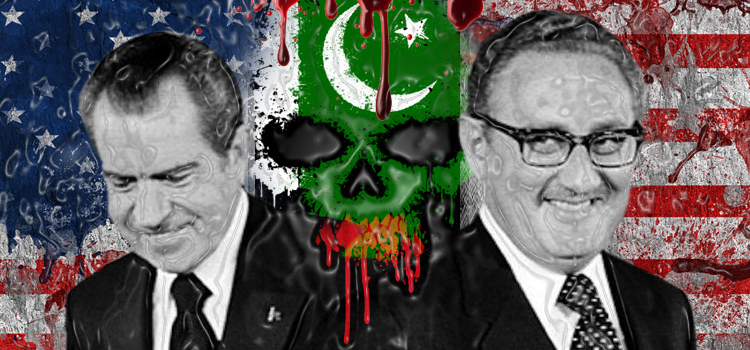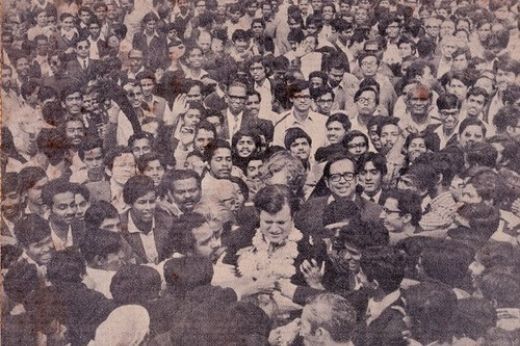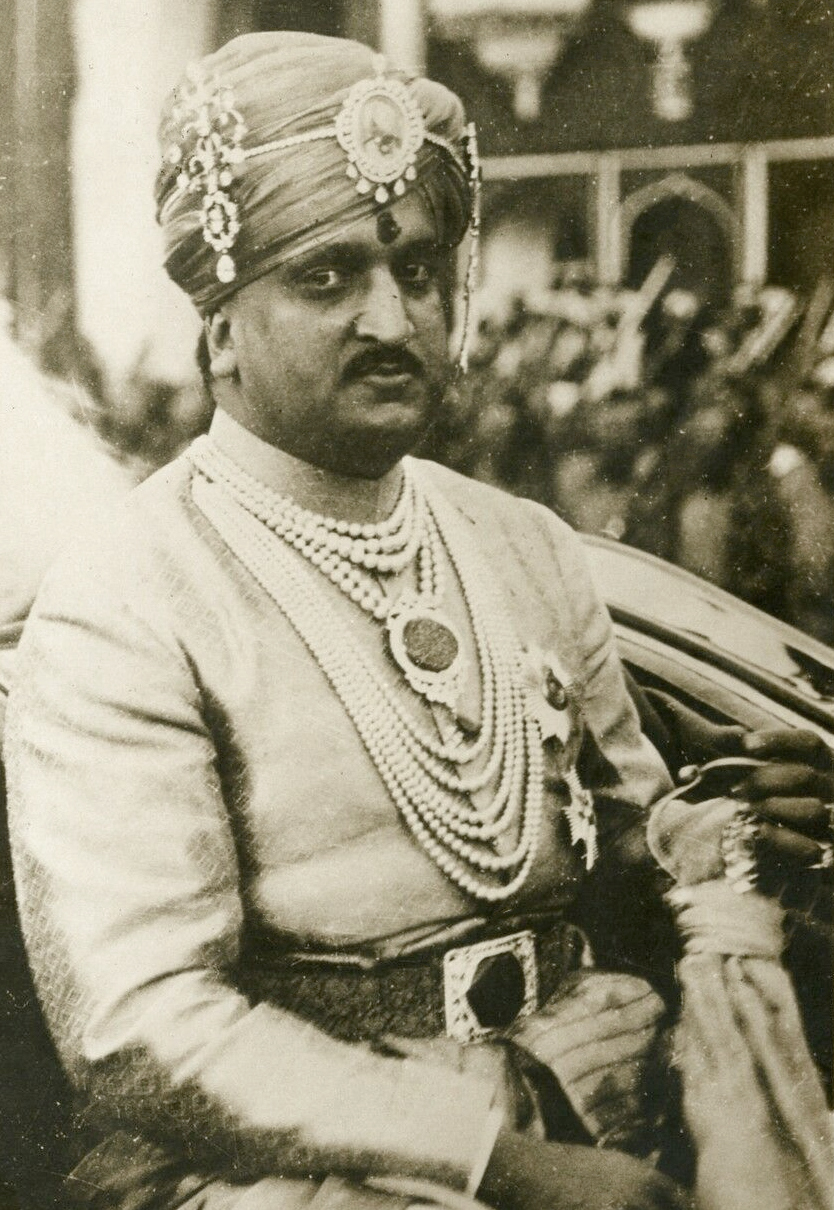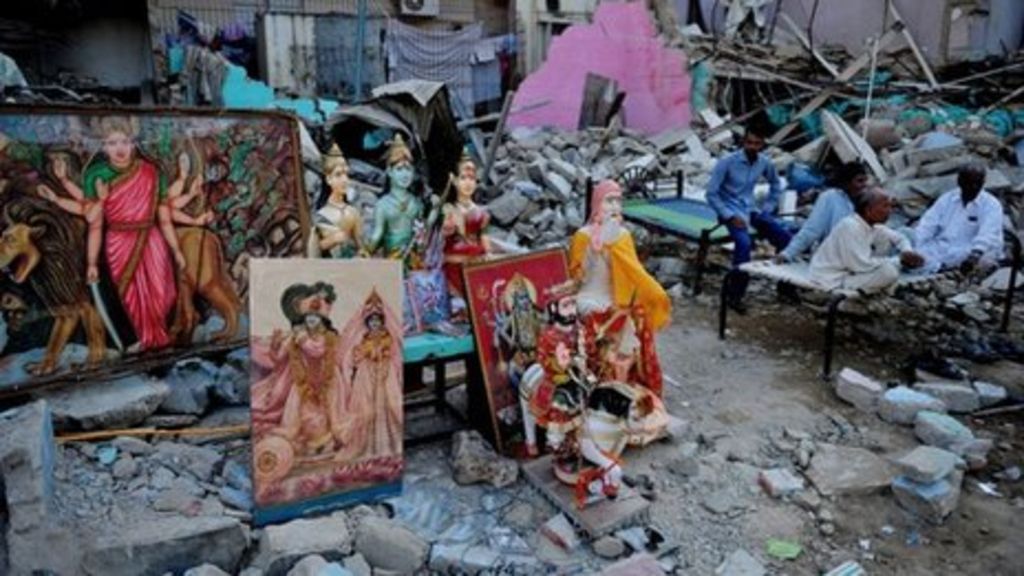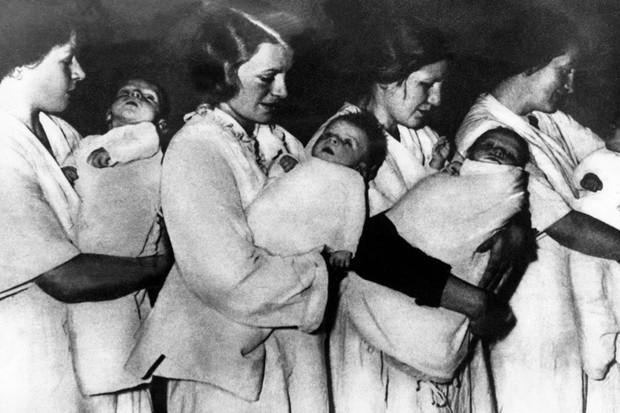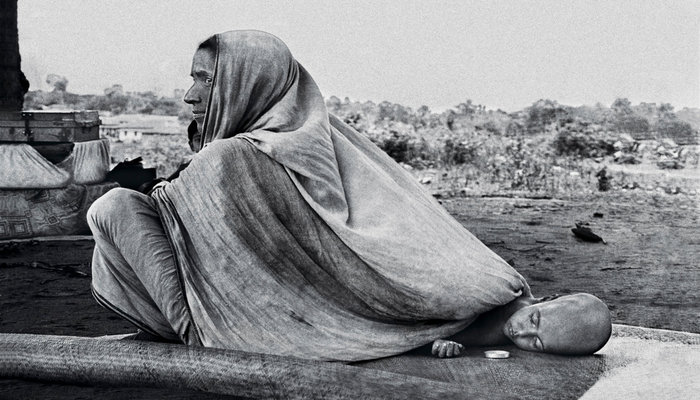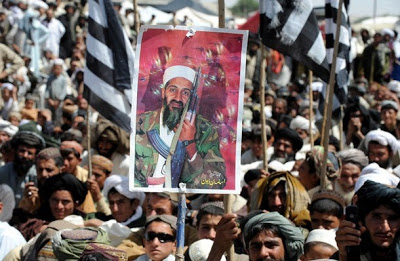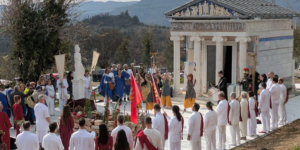We Need to Talk About Kevin is a 2011 award-winning and very disturbing psychological thriller, in which teenager Kevin Khatchadourian is in prison after committing a massacre at his high school. He locks several students in the school gymnasium and murders them with his bow and arrows. When his mother Eva arrives home, she finds Kevin has murdered her husband Franklin and daughter Celia. On the second anniversary of the massacre, Eva visits Kevin in prison.
She asks him why he committed the murders. Kevin, who is about to be transferred to an adult prison, responds that he used to think he knew but is no longer sure. Eva hugs Kevin and walks away sadly.
For Eva, there is no escape in the past. What was the root of the violence? And what role, if any, did she play in bringing it about? Can a mother truly abandon the very monster they gave birth to, nurtured, and now ask why that offspring turned against them? Why their efforts at appeasement are constantly rebuffed? The film and the novel on which it is based are fiction. Yet in the real world things can be even more sinister.
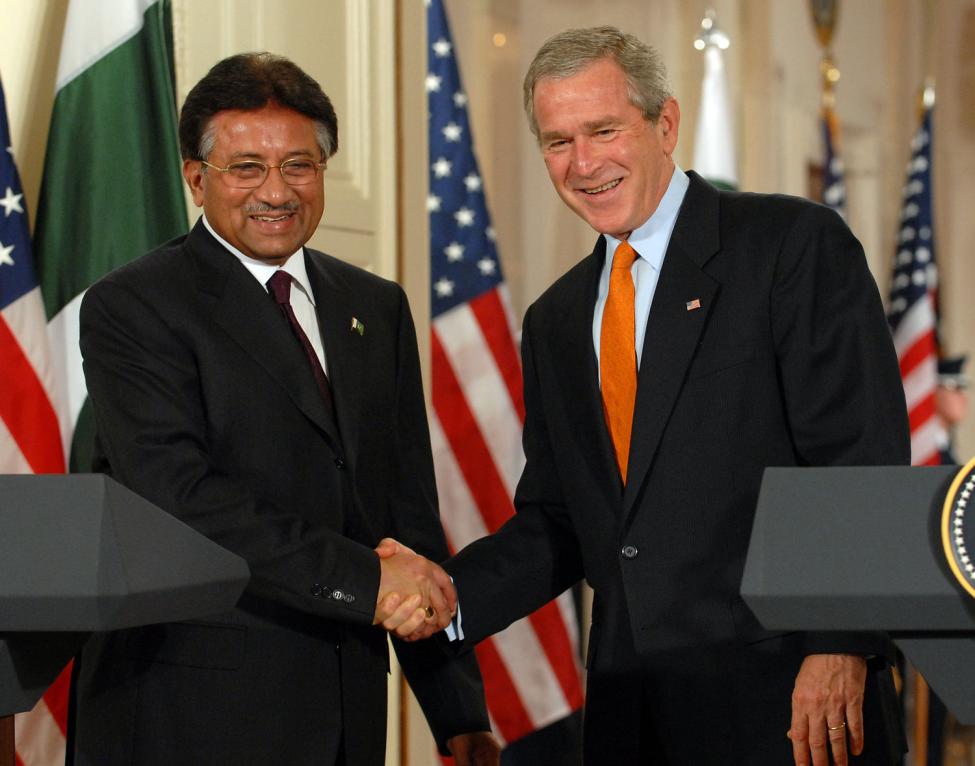 Pakistan has long been an important American ally. After the attacks of 9/11 President Bush touted its then leader Pervez Musharraf as a close friend and ally in the war on terrorism. This was unfortunately very wishful thinking. It was also incredibly stupid military strategy.
Pakistan has long been an important American ally. After the attacks of 9/11 President Bush touted its then leader Pervez Musharraf as a close friend and ally in the war on terrorism. This was unfortunately very wishful thinking. It was also incredibly stupid military strategy.
Emphasis was made on attacking Iraq where Saddam Hussein was made out to be the close ally of al-Qaeda. In reality Saddam had ruthlessly suppressed any opposition to his rule, including from Islamic jihadis.
He had no links to Osama bin Laden. The irony was that this terrorist mastermind was hiding in Pakistan. In fact his involvement had begun as an American proxy to help channel money and arms to fight the Soviets after they had invaded Afghanistan in 1979.
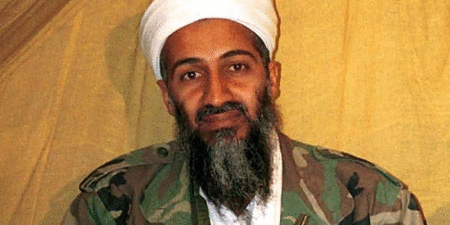 The Taliban and similar outfits were creations of Pakistan funded by America’s other ally Saudi Arabia. Bin Laden began his career as one of many Saudis who went to fight jihad against the communist enemy, and in doing so brought their lavish funds and puritanical strand of Islam (Wahhabism) to Pakistan.
The Taliban and similar outfits were creations of Pakistan funded by America’s other ally Saudi Arabia. Bin Laden began his career as one of many Saudis who went to fight jihad against the communist enemy, and in doing so brought their lavish funds and puritanical strand of Islam (Wahhabism) to Pakistan.
Bush was merely the latest in a string of US presidents who have consistently supported this terrorist state where religious extremism harmonises with the fervour of apocalyptic evangelical Christianity that dominates conservative politics in America. India is seen as somewhere bizarre and exotic and too much like the indigenous Native American cultures that were exterminated and marginalised, so that they exist in reservations where poverty, alcoholism and domestic abuse is rife.
But this is as much a problem on the Left where one would have thought there would be some resonance with the deep spirituality, mysticism, polytheism, environmentalism and other facets which are usually associated with this side of politics. Instead the darling of the Left and Democratic Party front runner, Bernie Sanders, has thrown his lot in with Pakistan and against India, and indeed Hindus.
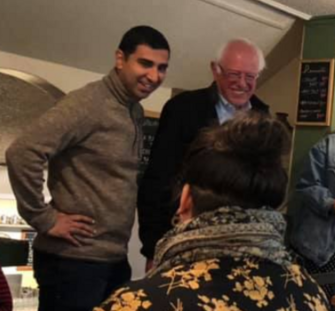 His aversion to the indigenous civilisation of India is helped by the fact that his campaign manager, Faiz Shakir, is himself the son of Pakistani immigrants. His condemnation of India’s military presence in Kashmir while ignoring the genocide of indigenous Hindus, and the constant terrorist attacks by Pakistan smack of old style westerns where the Native Americans were portrayed as mere savages for trying to stop their own annihilation by white settlers. Yet Sanders is merely one head of a hydra, and when each head is cut another springs up.
His aversion to the indigenous civilisation of India is helped by the fact that his campaign manager, Faiz Shakir, is himself the son of Pakistani immigrants. His condemnation of India’s military presence in Kashmir while ignoring the genocide of indigenous Hindus, and the constant terrorist attacks by Pakistan smack of old style westerns where the Native Americans were portrayed as mere savages for trying to stop their own annihilation by white settlers. Yet Sanders is merely one head of a hydra, and when each head is cut another springs up.
Pakistan is perhaps one of the few issues where Sanders and Trump will be in agreement. Donald Trump has authorized the reinstatement of a military training and educational program in Pakistan more than a year after suspending it.
educational program in Pakistan more than a year after suspending it.
After all, nobody can disown the very child they gave birth to. Without American nurturing, this remnant of British colonialism would have long ceased to have exist. With that there would have been no 9/11.
Pakistan is a Fascist State
Brexit dawns on a dislocated political elite across Europe. The phenomenon has been called variously populism, nationalism, xenophobia and even racism and fascism. Indeed far from thwarting the rise of what is seen as the Far Right, European integration only hastened its rise and appeal.
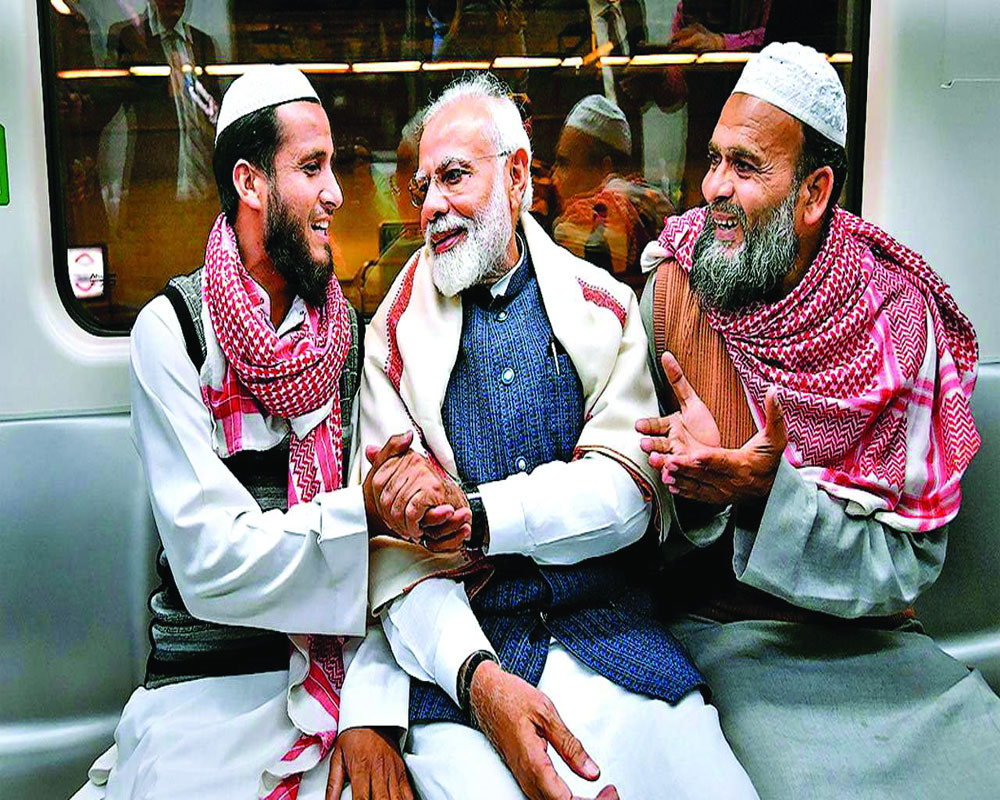 In the UK Nigel Farage formerly of UKIP and leader of Brexit party, Gerard Batten the former leader of UKIP, and at times Boris Johnson are seen as part of this manifestation. Viktor Orban of Hungary’s national conservative Fidesz, Jarosław Kaczyński of Poland’s Law and Justice Party, Geert Wilders of Netherlands’ Party for Freedom, and Matteo Salvini of Italy’s Northern League, are often put in the same bracket. We also have the more overtly fascist Alternative for Germany and France’s National Rally in this same bracket. Russia’s Putin and America’s Trump are also seen as part of this anti-liberal if not anti-democratic populist wave. As indeed is India’s Narendra Modi.
In the UK Nigel Farage formerly of UKIP and leader of Brexit party, Gerard Batten the former leader of UKIP, and at times Boris Johnson are seen as part of this manifestation. Viktor Orban of Hungary’s national conservative Fidesz, Jarosław Kaczyński of Poland’s Law and Justice Party, Geert Wilders of Netherlands’ Party for Freedom, and Matteo Salvini of Italy’s Northern League, are often put in the same bracket. We also have the more overtly fascist Alternative for Germany and France’s National Rally in this same bracket. Russia’s Putin and America’s Trump are also seen as part of this anti-liberal if not anti-democratic populist wave. As indeed is India’s Narendra Modi.
This is where it gets murky, especially when you try and apply western political concepts to India’s political environment. The BJP is called Hindu nationalist and extreme right-wing. But right in respect of what? In India every party hankers after the label of socialist and secular. This begs the questions of where this centre is located.
The entire exercise in trying to mould Indian politics into digestible western morsels is as flawed as using Protestant and Enlightenment principles which sprang from the carnage of the Thirty Years War and the French Revolution in understanding the religious climate. It does not work.
 Prime Minister Imran Khan of Pakistan attended the Word Economic Forum in Davos in January 2020. He told the panel:
Prime Minister Imran Khan of Pakistan attended the Word Economic Forum in Davos in January 2020. He told the panel:
“Just read Google and the founding fathers of RSS and read how they were inspired by … Hitler, and Hitler’s brown shirts. RSS has these guys, four million people trained, almost in similar patterns.”
Since the abrogation of Article 370, Khan has likened the Indian government to Nazis. In a series of tweets posted last August, when Kashmir tensions were at their peak, he said India’s actions in Kashmir amounted to “ethnic cleansing” and compared the ideology of the Indian government to “the Nazi Aryan Supremacy.” he also accused India of trying “to change demography of Kashmir through ethnic cleansing, and that “the curfew, crackdown and impending genocide” was “inspired by Nazi ideology.” He also compared global inaction on the issue to ignoring Hitler.
But in all this spin doctoring, fake news and social media warfare has anyone asked what exactly is Imran Khan doing in his own backyard? Why do so many non-Muslims flee his country to seek sanctuary in India? In fact why are Muslims fleeing the states of Pakistan and Bangladesh which were carved out of India’s flesh in order to appease fears of mythical Hindu domination? We do not have to look far to see where the labels of fascism, Nazism and ultranationalism need apply. And it is not India. If we want to find where right-wing extremism flourishes, it is in Pakistan, where it is normal and mainstream.
Nazification of South Asian Politics
During World War II, the euphemism čišćenje terena (“cleansing the terrain”) was used by the Croatian Ustaše to describe military actions in which non-Croats were purposely killed or otherwise uprooted from their homes. The Ustaše were collaborators with the German occupiers.
 They were opposed by communist partisans and the Serb nationalists, or Chetniks. It was the latter who used this term as they massacred and expelled Croats and Bosnian Muslims.
They were opposed by communist partisans and the Serb nationalists, or Chetniks. It was the latter who used this term as they massacred and expelled Croats and Bosnian Muslims.
The Russian phrase ochistka granits; “cleansing of borders”, was used in Soviet documents of the early 1930s to refer to the forced resettlement of Poles. The actual term “ethnic cleansing” first appeared in the Romanian language (purificare etnică) in an address by Vice Prime Minister Mihai Antonescu to cabinet members in July 1941 as the Axis invaded the USSR. In the 1980s, the Soviets used the term “ethnic cleansing” to describe the inter-ethnic violence in Nagorno-Karabakh.
The partition of British India is however rarely understood using such terms. It is portrayed as a situation where Hindus, Muslims and Sikhs all committed atrocities as well as being victims, very few academics make complex analysis that breaks down the details sufficient to support the leveling of accountability in this relativistic way.But what was the driving force between the ensuing demographic carnage?
In 1933 an Indian Muslim, 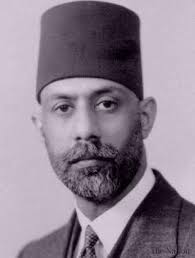 Choudhry Rahmat Ali, was studying at Cambridge University where he coined the phrase ‘Pakistan’ as a homeland for Muslims. In a pamphlet entitled Now or Never, he urged a separate homeland so that Muslims could live free from the suffocation of Hindu nationalism.
Choudhry Rahmat Ali, was studying at Cambridge University where he coined the phrase ‘Pakistan’ as a homeland for Muslims. In a pamphlet entitled Now or Never, he urged a separate homeland so that Muslims could live free from the suffocation of Hindu nationalism.
Mian Abdul Haq, a contemporary of Rahmat Ali at the University of Cambridge, stated that, after 1935, Rahmat Ali’s mental makeup changed resulting from a study of “major Nazi works, of which he knew many passages by heart” No surprise then that in his 1946 book Millat and its Mission, he categorically stated that Pakistan should avoid having Hindu and Sikh minorities, while Hindu India should be cleared of its Muslim component. It was ironic that his dream nation turned into a personal nightmare. Dissatisfied with his Muslim homeland being so small he was barely in the country a few months before the Prime Minister Liaqat Ali Khan, had him expelled in October 1948. Ali died on 3 February 1951 in Cambridge; impoverished, alone and destitute.
 Muhammad Ali Jinnah as leader of the Muslim League did little to hide his own fascist leanings. On October 8, 1938, in his presidential address at the Sindh Muslim League conference, Karachi, Jinnah drew parallels between India’s Muslim minority and the German minority in the Sudetenland in Czechoslovakia. The latter were eager to secede and join the Third Reich, leading eventually to the German invasion of Czechoslovakia, and the resultant dismemberment of that country. In October 1946 Jinnah delivered a speech in London where he said:
Muhammad Ali Jinnah as leader of the Muslim League did little to hide his own fascist leanings. On October 8, 1938, in his presidential address at the Sindh Muslim League conference, Karachi, Jinnah drew parallels between India’s Muslim minority and the German minority in the Sudetenland in Czechoslovakia. The latter were eager to secede and join the Third Reich, leading eventually to the German invasion of Czechoslovakia, and the resultant dismemberment of that country. In October 1946 Jinnah delivered a speech in London where he said:
“We should have a population of 100,000,000 all Muslims.”
In his book Thoughts on Pakistan, Dr Ambedkar, author of the constitution of independent India, noticed:
“The Muslims are now speaking the language of Hitler and claiming a place in the sun as Hitler has been doing for Germany. For their demand for 50 per cent is nothing but a counterpart of the German claims for Deutschland Uber Alles and Lebensraum for themselves, irrespective of what happens to other minorities.”
 When Jinnah came to Cairo for an international Islamic conference, he made it a point to meet Mufti Mohammed Amin al-Husseini and hold in-depth discussions with him. The Mufti of course became a fully-fledged Nazi ally.
When Jinnah came to Cairo for an international Islamic conference, he made it a point to meet Mufti Mohammed Amin al-Husseini and hold in-depth discussions with him. The Mufti of course became a fully-fledged Nazi ally.
In 1942 he flew to Germany and met Hitler in person and helped Nazis by recruiting 20,000 Muslim volunteers for the SS. Hitler declared the Mufti as an ‘honorary Aryan’. After the war he became a hero in Pakistan. In 1951, he presided over an international Islamic conference in Pakistan which was attended by Prime Minister Liaquat Ali Khan. The head of the state of Pakistan delivered a lecture piously standing before al-Husseini seated in a presidential throne.
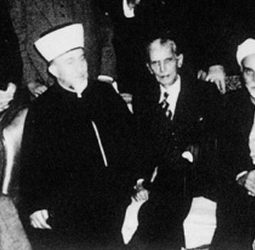 Jinnah himself made his own contributions to copycat Nazism. Within a year of independence, his government revoked the rights of 2000 Bene Yisrael Jews who formed the minuscule Jewish community of Pakistan. This included denial of political representation.
Jinnah himself made his own contributions to copycat Nazism. Within a year of independence, his government revoked the rights of 2000 Bene Yisrael Jews who formed the minuscule Jewish community of Pakistan. This included denial of political representation.
The synagogue which had stood for decades in undivided India in Karachi was set alight and Jews were attacked. This resulted in the large-scale emigration of the community, mostly to India. By the early 1950s, only an estimated 250 Jews remained in Karachi.
This however went right back to the movement which created Pakistan. On 21 March 1934 the pro-Nazi journalist Habib ur-Rahman wrote The Jewish Question in India, in Calcutta’s Hindustan Standard. Rahman was rumoured to be in the confidence of Dr Goebbels, and wrote that Jewish refugees must be banned from India. AE Shohet of the Bombay Zionist Association feared that the Muslim League were pro-fascist and receptive to Nazi ideology.
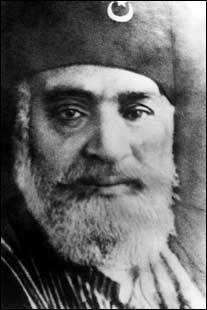 In 1939, in the Bombay Sentinel, Indian National Congress member BH Horniman reported that German money was flowing into India to create sympathy for Nazism, especially among the Muslims. Already in October 1937, Shaukat Ali of the Muslim League decried any idea to partition Palestine in favour of the Jews.
In 1939, in the Bombay Sentinel, Indian National Congress member BH Horniman reported that German money was flowing into India to create sympathy for Nazism, especially among the Muslims. Already in October 1937, Shaukat Ali of the Muslim League decried any idea to partition Palestine in favour of the Jews.
He had met with al-Husayni, recognising the mufti as spiritual leader of Indian Muslims. Shaukat Ali also feared Jewish imperial designs on the Middle East and that they were behind anti-Indian discrimination in South Africa. Jinnah endorsed his position on keeping Palestine unified, even while he was favouring the partition of India. But it was something which became common ground between the Muslim League and Congress. However, the anti-Hindu ideology of the Muslim League would make even that support for Arab nationalism very shaky ground. In the 1937 Muslim League resolution on Palestine, Jewish finance was blamed for enslaving the Arabs under the British.
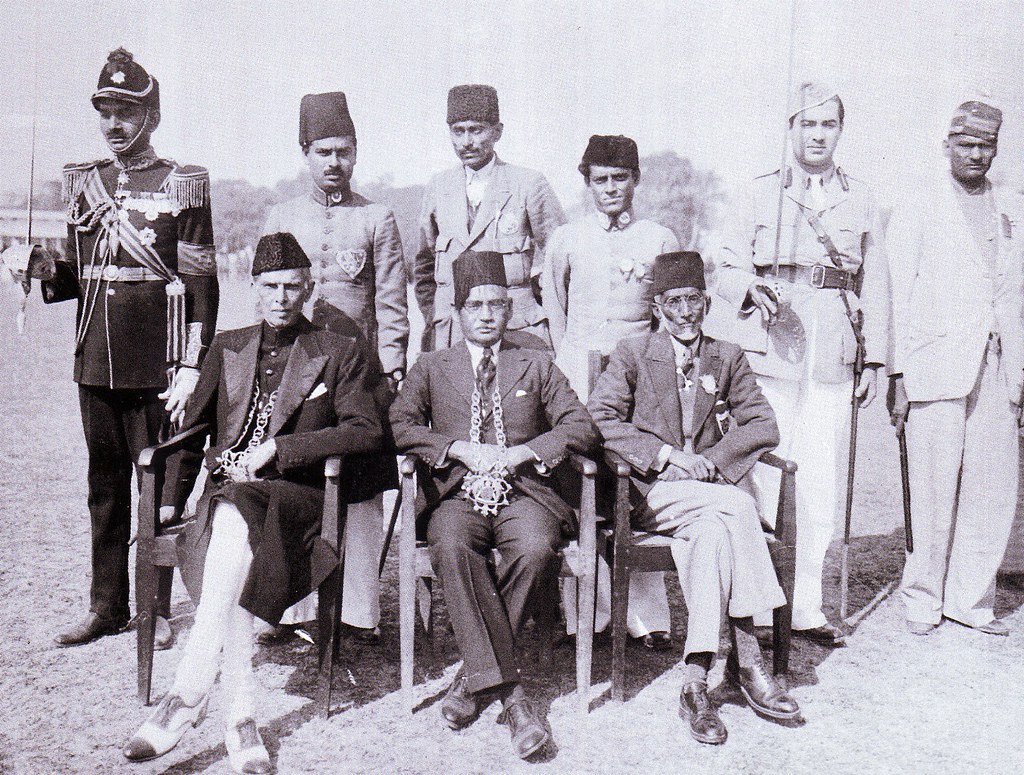 At the session of the Muslim League in Patna in 1938, Abdul Sattar Khan condemned Hindus and Jews as the enemies of Muslims. Abdul Khaliq went further:
At the session of the Muslim League in Patna in 1938, Abdul Sattar Khan condemned Hindus and Jews as the enemies of Muslims. Abdul Khaliq went further:
“The real Jews of the West were the British, and those of the East were Hindus, and both were the sons of Shylock.”
For this he was admonished by Jinnah. Yet with the formation of Pakistan that state copied the Nazi ideology to which it has so much sympathy to make the country Judenfrei. Demonstrating solidarity with displaced Palestinians, attacks on Jews began in Peshawar in December 1947. From here and Multan, the miniscule Jewish community fled to Karachi, and then to Bombay, especially after witnessing the fate which befell the much larger Hindu and Sikh minorities.
Yet the hate remained. In March 2004, a spokesperson for Lashkar-e-Toiba, was quoted in Greater Kashmir newspaper as saying that they “will take revenge in India as Yahud (Jews) and Hindus are two sides of the same coin.” Even the current stand of Pakistan wherein it portrays itself as against Taliban and Al Qaeda, is filled with amazing conspiracy theories which aim hatred at Hindus and Jews.
Kissinger’s Lenin
 At the Islamic Society of North America’s annual convention on 31 August 2019 in Houston, Democrat presidential hopeful, and darling of the American Left, Bernie Sanders, spoke. He was introduced by his campaign manager, Faiz Shakir. India’s action is unacceptable,” Sanders said.
At the Islamic Society of North America’s annual convention on 31 August 2019 in Houston, Democrat presidential hopeful, and darling of the American Left, Bernie Sanders, spoke. He was introduced by his campaign manager, Faiz Shakir. India’s action is unacceptable,” Sanders said.
“The communications blockade must be lifted immediately, and the United States government must speak out boldly in support of international humanitarian law and in support of a U.N.-backed peaceful resolution that respects the will of the Kashmiri people.”
But does Sanders know that his position was one constantly adopted by the very American neo-colonialism, conservative war hawks and military interventionism which he otherwise opposes? Crucially, Sanders used the words “Kashmiri people,” a not-so-subtle signal that he accepts the existence of Kashmir as an independent political entity.
These various disparate and conflicting elements mask a disturbing truth. The Kashmir issue is not just a bad euphemism for genocide against Hindus and international jihad against India. It was also the darling of the very American imperialism war machine which the Left opposes.
Pakistan allied itself with the United States during the Cold war era against the Soviet Union, and was an integral player in the CENTO and SEATO alliances that complemented NATO.
The Central Treaty Organization (CENTO), originally known as the Baghdad Pact or the Middle East Treaty Organization (METO), was formed in 1955 by Iran, Iraq, Pakistan, Turkey and the United Kingdom and dissolved in 1979.
The Southeast Asia Collective Defense Treaty, or Manila Pact, was signed on 8 September 1954 in Manila, as part of the American Truman Doctrine of creating anti-communist bilateral and collective defence treaties.
During the military dictatorship of Ayub Khan, Pakistan enjoyed a close relationship with the United States. Ayub Khan was strongly pro-American, and on a visit the United States in 1954, before Khan was head of state, he famously told American Brigadier-General Henry A. Byroade,
“I didn’t come here to look at barracks. Our army can be your army if you want us. But let’s make a decision”.
President Richard Nixon and Henry Kissinger took advantage of Pakistan’s close relationship with People Republic of China to initiate secret contacts that resulted in Henry Kissinger’s secret visit to China in July 1971 after visiting Pakistan.
They also actively supported Pakistan in its genocide against Bengalis in East Pakistan, and threatened military action against India if it dared help the liberation of what became Bangladesh. Nixon and Kissinger reacted with fury against their own consul general in Dhaka, Archer Blood, for exposing the genocide by the American-backed Pakistan military.
The Blood Telegram (April 6, 1971), sent via the State Department’s Dissent Channel, was seen as the most strongly worded expression of dissent in the history of the U.S. Foreign Service.
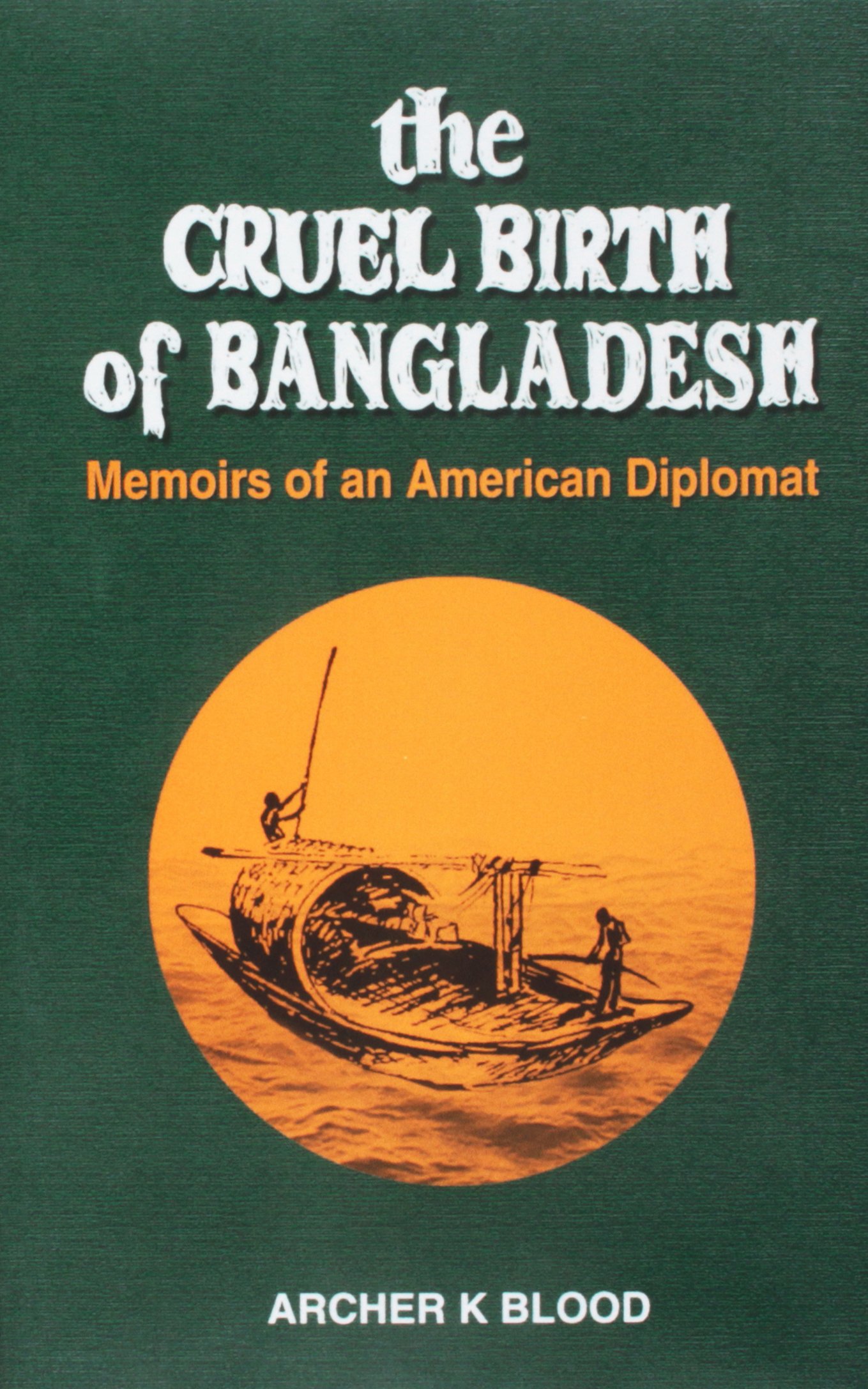 He wrote the book, The Cruel Birth of Bangladesh – Memoirs of an American Diplomat, about his experience during the Bangladesh Liberation War, and received the Christian A. Herter Award in 1971 for “extraordinary accomplishment involving initiative, integrity, intellectual courage and creative dissent”. Blood died of arterial sclerosis on September 3, 2004, in Fort Collins, Colorado, where he had been living since 1993.
He wrote the book, The Cruel Birth of Bangladesh – Memoirs of an American Diplomat, about his experience during the Bangladesh Liberation War, and received the Christian A. Herter Award in 1971 for “extraordinary accomplishment involving initiative, integrity, intellectual courage and creative dissent”. Blood died of arterial sclerosis on September 3, 2004, in Fort Collins, Colorado, where he had been living since 1993.
His death made headlines in Bangladesh, but was lucky to make it to the back pages of the obituary sections in American newspapers. Bangladesh sent a delegation to the funeral in Fort Collins and Mrs. Blood received numerous communiques from Bangladeshis. In May 2005, Blood was posthumously awarded the Outstanding Services Award by the Bangladeshi-American Foundation, Inc. (BAFI) at the First Bangladeshi-American Convention, for his role in 1970 and 1971 for the cause of humanity and his brave stance against the US official policy while the Pakistan army was engaged in a genocidal mission in what is now Bangladesh.
Bangladesh also has great respect for the late Senator Edward Kennedy. Akku Chowdhury, founder and director of Bangladesh’s Liberation War Museum, speaking to CNN on 27 August 2009:
“In 1971, there were very few leaders from the so-called free world who were paying any attention to what was going on in Bangladesh. And for Ted Kennedy to come forward and to personally visit, the impact was huge. And that’s one thing Bangladeshis have always remembered.”
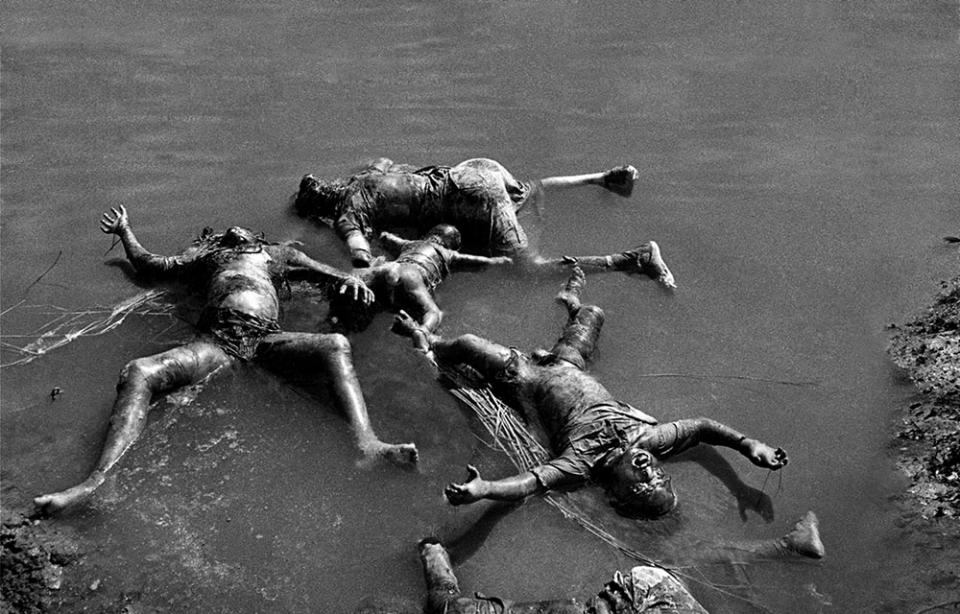 After visiting Bengali refugees in India, he issued a scathing report to the Senate Judiciary Committee on Refugees. The report, “Crisis in South Asia,” spoke of “one of the most appalling tides of human misery in modern times.” Further:
After visiting Bengali refugees in India, he issued a scathing report to the Senate Judiciary Committee on Refugees. The report, “Crisis in South Asia,” spoke of “one of the most appalling tides of human misery in modern times.” Further:
“Nothing is more clear, or more easily documented, than the systematic campaign of terror — and its genocidal consequences — launched by the Pakistani army on the night of March 25th. All of this has been officially sanctioned, ordered and implemented under martial law from Islamabad. America’s heavy support of Islamabad is nothing short of complicity in the human and political tragedy of East Bengal.”
On December 16, 1971, Bangladesh gained independence after a 10-month struggle, in which 1 million to 3 million Bengalis were killed. IN February 1972 Kennedy flew to Bangladesh and delivered a speech at Dhaka University, where the killing rampage had begun a year earlier.
 About 8,000 jubilant students crowded into the university courtyard and jammed lecture hall balconies and roofs, greeting him with chants of “Joi Kennedy” — a variation on the independence slogan of “Joi Bangla.” In his speech, Kennedy drew parallels between the liberation of Bangladesh and the American Revolution. He said America had prospered despite predictions that it would collapse following independence, and so would Bangladesh.
About 8,000 jubilant students crowded into the university courtyard and jammed lecture hall balconies and roofs, greeting him with chants of “Joi Kennedy” — a variation on the independence slogan of “Joi Bangla.” In his speech, Kennedy drew parallels between the liberation of Bangladesh and the American Revolution. He said America had prospered despite predictions that it would collapse following independence, and so would Bangladesh.
“Even though the United States government does not recognize you, the people of the world do recognize you,” Kennedy told the crowd. On the university campus stood a banyan tree where Bengalis student leaders had planted the seeds for the independence movement — and which the Pakistani army had destroyed as a symbolic gesture. During his visit, Kennedy planted a new tree there.
Kennedy was the darling of the Left in that era. He made speeches criticising American involvement in Vietnam. He also called for a united Ireland and claimed that Ulster was Britain’s own Vietnam. Now a new darling of the Left must have Kennedy turning in his grave, as Bernie Sanders becomes the useful idiot for Islamic terrorism and the puppet of Islamabad on Kashmir. Unlike Kennedy, he does not even acknowledge the existence of Hindu refugees from Pakistan sponsored jihad, let alone visit the victims in the camps.
Throughout the military regime of General Zia-ul-Haq, the ties and relations were promoted at its maximum point, and the United States had given billion dollars of economic and military aid to Pakistan. The Soviet invasion of Afghanistan in December 1979 highlighted the common interest of Pakistan and the United States in opposing the USSR. Reagan saw Zia as a dependable ally 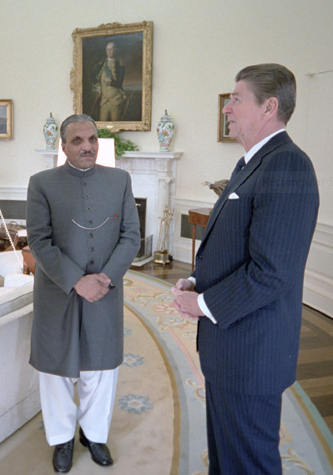 of the west. General Akhtar Abdur Rahman of ISI and William Casey of CIA worked together in harmony, and in an atmosphere of mutual trust. The ISI officer Mohammad Yusuf stated ““It was a great blow to the Jehad when Casey died”, calling Casey “Shaheed”.
of the west. General Akhtar Abdur Rahman of ISI and William Casey of CIA worked together in harmony, and in an atmosphere of mutual trust. The ISI officer Mohammad Yusuf stated ““It was a great blow to the Jehad when Casey died”, calling Casey “Shaheed”.
Hence this state was built up with American financial and military aid. Relations with the war hawks only soured when it became too obvious that Pakistan was sabotaging attempts at stopping Islamic terrorism. Yet even with this support among western nations for Pakistan’s position of Kashmir remains. It is one of the few areas which unites both Left and Right wings of the political spectrum, making nonsense of both. When Sanders supports Kashmir, he is much closer to conservative war hawks Nixon, Kissinger and Reagan, than he is to the late Edward Kennedy of his own Democratic Party.
Anschluss with Kashmir
On 12 March 1938, Austria was annexed by Germany. This was termed Anschluss, or the joining of two great German-speaking peoples. After the Nazis gained power in Germany in 1933, they used propaganda to try to coerce Austrians into advocating for an Anschluss to the German Reich by using slogans such as Ein Volk, ein Reich, ein Führer (“One People, One Empire, One Leader”).
The 1920 National Socialist Program stated as its first point, “We demand the unification of all Germans in the Greater Germany on the basis of the people’s right to self-determination.” Hitler argued in a 1921 essay that the German Reich had had a single task of, “incorporating the ten million German-Austrians”. Before the annexation Germany had been putting pressure on Austria.
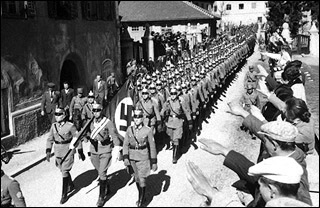 On 9 March 1938, in the face of rioting by the small Austrian Nazi Party and ever-expanding German demands on Austria, Chancellor Kurt Schuschnigg called for a plebiscite on the issue, to be held on 13 March.
On 9 March 1938, in the face of rioting by the small Austrian Nazi Party and ever-expanding German demands on Austria, Chancellor Kurt Schuschnigg called for a plebiscite on the issue, to be held on 13 March.
This failed to stop the invasion by Hitler. All opposition was crushed and Jews were forced to wash the streets of Vienna. The Nazis dissolved Jewish organisations and institutions, hoping to force Jews to emigrate.
Their plans succeeded—by the end of 1941, 130,000 Jews had left Vienna, 30,000 of whom went to the United States. They left behind all of their property, but were forced to pay the Reich Flight Tax, a tax on all émigrés from Nazi Germany. The majority of the Jews who had stayed in Vienna eventually became victims of the Holocaust. Between 1938-1939 the Nazis arrested around 2,000 Gypsy men who were sent to Dachau and 1,000 Gypsy women who were sent to Ravensbrück.
The Anschluss was given immediate effect by legislative act on 13 March, subject to ratification by a plebiscite. Austria became the province of Ostmark, and Seyss-Inquart was appointed governor. The plebiscite was held on 10 April and officially recorded a support of 99.7% of the voters. It was neither free nor secret. Officials were present directly beside the voting booths and received the voting ballot by hand.
 Being a Muslim majority state, Jinnah expected Kashmir to accede to Pakistan. But the state had a Hindu maharaja, and substantial Hindu and Buddhist populations. While the majority was Muslim, this was concentrated in the valley, the major population centre, which included Srinagar.
Being a Muslim majority state, Jinnah expected Kashmir to accede to Pakistan. But the state had a Hindu maharaja, and substantial Hindu and Buddhist populations. While the majority was Muslim, this was concentrated in the valley, the major population centre, which included Srinagar.
On 19 July 1947, Sardar Muhammad Ibrahim Khan of the Muslim Conference held a general assembly meeting at his residence where a resolution was unanimously passed for the State of Kashmir to join Pakistan. He then fled the state to Murree in Pakistan to gather support for jihad against the Hindu rulers. On 24 October 1947, he defeated the forces of the Maharaja in the Poonch rebellion and founded the state of Azad Kashmir, which was annexed by Pakistan.
Attempts by Maharaja Hari Singh to remain independent were thwarted when Pakistan backed armed Pashtun tribesmen invaded, indulging in murder, rape and abduction. Anyone unable to recite the kalima was liable to have their life expectancy drastically shortened. Accession to India by Hari Singh prevented the wholesale annihilation of Kashmir by Pakistan backed forced. According to Jinnah, India acquired the accession through “fraud and violence”. Imran Khan is thus heir to this thinking. Pakistan cannot imagine existing without Kashmir.
Letting go would be denying the Two Nation Theory on which Pakistan is built. Hence an anti-India and anti-Hindu stance is essential. Pakistan can no more imagine existing without Kashmir than Hitler could allow the existence of an independent Austria. Of course we all know what happened next.
Austria was not the end, but the beginning. Hitler next demanded the Sudetenland, under the myth that the German minority in this part of Czechoslovakia were facing discrimination. They needed self-determination, to join the Reich. After Masaryk acceded to Hitler’s demands, the Germans then took the rest of the country, dismembering it and making Slovakia a puppet Nazi state.
Hence when Hitler demanded that Poland give him Danzig, they saw through the game. The issue of Danzig was not the cause  of the German invasion; Hitler told his generals in May 1939: “It is not Danzig that is at stake. For us it is a matter of expanding our living space in the east and making food supplies secure.” The total destruction of the Polish state, Polish culture, and indeed the Polish population had become Hitler’s main objective. He wanted the agricultural land to resettle German farmers.
of the German invasion; Hitler told his generals in May 1939: “It is not Danzig that is at stake. For us it is a matter of expanding our living space in the east and making food supplies secure.” The total destruction of the Polish state, Polish culture, and indeed the Polish population had become Hitler’s main objective. He wanted the agricultural land to resettle German farmers.
In like manner the real reason for Pakistan wanting Kashmir is to continue its jihad imperialism against India. The loss of Bangladesh makes a mockery of the Two Nation Theory. Hence the reorientation of Pakistan onto a more Wahhabi Islam under Zia, with backing from his Saudi and American allies. This has added to the already precarious situation of minorities in that state.
When Sanders and the Democrats take up the issue of Kashmir, they are pandering to an ideology which smacks of the very imperialism they oppose. When the Labour Party passes resolutions supporting Kashmir, it is tacitly supporting the extermination of Hindus from their ancestral homeland. When support for so-called Kashmiri self-determination becomes an integral part of the Leftist ideological war machine, it becomes the very fascism which it claims to oppose.
Pakistan Reich
At Davos, Imran Khan lambasted the CAA (Citizenship Amendment Act) which makes it easier for non-Muslim minorities persecuted in neighbouring states of Pakistan, Bangladesh and Afghanistan to attain citizenship in India. Khan claimed these rules favoured India’s Hindu majority and were reminiscent of racial laws in the Third Reich. But he was yet again ignoring his own backyard.
A survey carried out by All Pakistan Hindu Rights Movement Pakistan’s revealed that out of 428 Hindu temples in Pakistan only around 20 survive today and they remain neglected by the Evacuee Trust Property Board which controls those while the rest had been converted for other uses.
In May 2014, a member of the ruling Pakistan Muslim League-Nawaz (PML-N), Dr. Ramesh Kumar Vankwani, revealed in the National Assembly of Pakistan that around 5,000 Hindus are migrating from Pakistan to India every year.
Women belonging to minority communities have been targets of forced conversions and marriages. This is especially true of poor families in Sindh, where bonded Hindu labourers known as Haris, are seen by their wealthy Muslim landlords fair game for abductions, rape, and prolonged sexual exploitation in captivity.
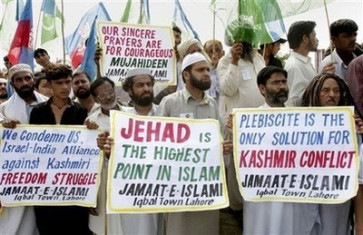 Islamic fundamentalist groups operating within Pakistan and neighbouring Afghanistan have broadcast or disseminated anti-Hindu propaganda among the masses. Pakistani Hindus who have fled to India allege that Hindu girls are sexually harassed in Pakistani schools, adding that Hindu students are made to read the Quran and that their religious practices are mocked.
Islamic fundamentalist groups operating within Pakistan and neighbouring Afghanistan have broadcast or disseminated anti-Hindu propaganda among the masses. Pakistani Hindus who have fled to India allege that Hindu girls are sexually harassed in Pakistani schools, adding that Hindu students are made to read the Quran and that their religious practices are mocked.
Pressurised conversion is used by promising identity cards, paying off of debts and other favours in order to induce Hindus to embrace Islam. From 20% in 1947 at inception, Hindus and Sikhs are barely 2% of Pakistan now. It is a demographic catastrophe worse than that of the conflict in former Yugoslavia, yet has received scant attention.
Pakistan is an Islamic state. The official religion is Islam. The president of Pakistan, in keeping with the constitutional provision that the state religion is Islam, must be a Muslim. This has been the case since the constitution of 1956. Also no law would be passed against the teachings of the Quran and Sunnah.
 Teachings on Arabic, Quran, and Islamiyat were compulsory in country’s institutions and to secure correct and exact printing and publishing of the Quran. The 1962 constitution of dictator Ayub Khan founded the Council of Islamic Ideology to bring laws in harmony with Islam. In 1974 Ahmadiyyas were declared non-Muslims. Military dictator Zia-ul-Haq committed himself to enforcing his interpretation of Nizam-e-Mustafa (“Rule of the prophet”); to establish an Islamic state and enforce sharia law.
Teachings on Arabic, Quran, and Islamiyat were compulsory in country’s institutions and to secure correct and exact printing and publishing of the Quran. The 1962 constitution of dictator Ayub Khan founded the Council of Islamic Ideology to bring laws in harmony with Islam. In 1974 Ahmadiyyas were declared non-Muslims. Military dictator Zia-ul-Haq committed himself to enforcing his interpretation of Nizam-e-Mustafa (“Rule of the prophet”); to establish an Islamic state and enforce sharia law.
Zia established separate Shariat judicial courts and court benches to judge legal cases using Islamic doctrine. New criminal offenses (of adultery, fornication, and types of blasphemy), and new punishments (of whipping, amputation, and stoning to death), were added to Pakistani law. Interest payments for bank accounts were replaced by “profit and loss” payments. Zakat charitable donations became a 2.5% annual tax.
 School textbooks and libraries were overhauled to remove un-Islamic material. Offices, schools, and factories were required to offer praying space. Zia bolstered the influence of the ulama (Islamic clergy) and the Islamic parties, whilst conservative scholars became fixtures on television. Thousands of activists from the Jamaat-e-Islami party were appointed to government posts to ensure the continuation of his agenda after his passing. Conservative ulama were added to the Council of Islamic Ideology. In his first televised speech to the country as head of state he declared that
School textbooks and libraries were overhauled to remove un-Islamic material. Offices, schools, and factories were required to offer praying space. Zia bolstered the influence of the ulama (Islamic clergy) and the Islamic parties, whilst conservative scholars became fixtures on television. Thousands of activists from the Jamaat-e-Islami party were appointed to government posts to ensure the continuation of his agenda after his passing. Conservative ulama were added to the Council of Islamic Ideology. In his first televised speech to the country as head of state he declared that
“Pakistan which was created in the name of Islam will continue to survive only if it sticks to Islam. That is why I consider the introduction of [an] Islamic system as an essential prerequisite for the country.”
 Zia used the Islamisation laws to suppress land reforms, working-class rights, trade unions and anyone daring to strike against appalling conditions. Separate electorates for Hindus and Christians were established in 1985.
Zia used the Islamisation laws to suppress land reforms, working-class rights, trade unions and anyone daring to strike against appalling conditions. Separate electorates for Hindus and Christians were established in 1985.
This had been originally proposed by Abul A’la Maududi, founder and leader of Jamaat-i-Islami. Christian and Hindu leaders complained that they felt excluded from county’s political process, but the policy had strong support from Islamists.
But most damning of all for non-Muslims were the Blasphemy Laws which carried capital punishment for insulting Islam. Prior to 1986, only 14 cases pertaining to blasphemy were reported in Pakistan. From 1987 to 2014 over 1300 people have been accused of blasphemy, mostly non-Muslim religious minorities. The vast majority of the accusations were lodged for desecration of the Quran, and the mechanisms have been used to persecute what remain of non-Muslims in the country, notably the notorious cases of Iqbal Masih and Asia Bibi, who had to flee abroad.
Madrasas massively expanded. Cinemas were closed and music videos banned from television. Zia’s death in 1988 did not reverse the process. Instead Pakistan became a hotbed for international terrorism. In a sick irony the Ministry of Religious Affairs, which is entrusted with safeguarding religious freedom, has on its masthead a Koranic verse:
“Islam is the only religion acceptable to God.”
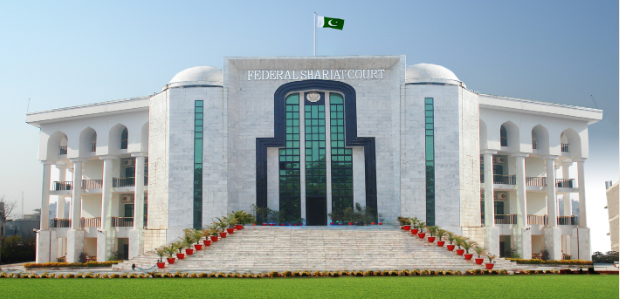 The Federal Shariat Court (FSC) of Pakistan is a court which has the power to examine and determine whether the laws of the country comply with Sharia law.
The Federal Shariat Court (FSC) of Pakistan is a court which has the power to examine and determine whether the laws of the country comply with Sharia law.
It consists of 8 Muslim judges appointed by the President of Pakistan after consulting the Chief Justice of this Court, from amongst the serving or retired judges of the Supreme Court or a High Court or from amongst persons possessing the qualifications of judges of a High Court. Of the 8 judges, 3 are required to be ulema who are well versed in Islamic law.
This goes right back to the creation of this Islamic republic. Choudhry Rahmat Ali published several pamphlet where he listed himself as the “Founder of the Pakistan National Movement“. He also added various maps of the subcontinent with potential names that the new proposed nation might have according to him. Haideristan, Siddiqistan, Faruqistan, Muinistan, Maplistan, Safiistan and Nasaristan were some of these names.
 Safiistan and Nasaristan nations were proposed on the map of Sri Lanka. He even named the Indian subcontinent as ‘Pakasia’ and more often as ‘Dinia’, (an anagram of “India” with position of ‘d’ changed). Dinia was represented with dependencies Pakistan, Osmanistan (representing Hyderabad Deccan and neighbouring areas) and Bangistan (representing Bengal).
Safiistan and Nasaristan nations were proposed on the map of Sri Lanka. He even named the Indian subcontinent as ‘Pakasia’ and more often as ‘Dinia’, (an anagram of “India” with position of ‘d’ changed). Dinia was represented with dependencies Pakistan, Osmanistan (representing Hyderabad Deccan and neighbouring areas) and Bangistan (representing Bengal).
He proposed the former Muslim provinces of Eastern Bengal and Assam to become Bangistan, and that the princely Hyderabad State, to become an Islamic monarchy called Osmanistan.
Some Pakistani nationalists state that Pakistan is the successor state of Islamic empires and kingdoms that ruled the region for almost a combined period of one millennium, the empires and kingdoms in order are Abbasid, Ghaznavid Empire, Ghorid Kingdom, Delhi Sultanate and Mughal Empire. Pakistan even names its ballistic missiles as Abdali, Babur, Ghauri and Ghaznavi, all Islamic colonialists who despoiled India and massacred Hindus in the name of Islam.
When Jinnah died, Islamic scholar Maulana Shabbir Ahmad Usmani described him as the greatest Muslim after the Aurangzeb and also compared Jinnah’s death to the Muhammad’s passing. Usmani asked Pakistanis to remember Jinnah’s message of Unity, Faith and Discipline and work to fulfil his dream:
“to create a solid bloc of all Muslim states from Karachi to Ankara, from Pakistan to Morocco. He [Jinnah] wanted to see the Muslims of the world united under the banner of Islam as an effective check against the aggressive designs of their enemies.”
Islamists from all over the world were thus drawn to Pakistan. Figures such as the Grand Mufti of Palestine, Al-Haj Amin al-Husseini, and leaders of Islamist political movements, such as the Muslim Brotherhood, became frequent visitors to the country. Long before Zia’s Islamisation, before al-Qaeda, before ISIS, Pakistan was established as the epicentre of global jihad and aggressive Islamic imperialism. It would even devour those for whom Pakistan was created.
Islamabad’s Lebensborn
Lebensborn was an SS-initiated, state-supported, registered association in Nazi Germany with the goal of raising the birth rate of Aryan children of persons classified as ‘racially pure’ and ‘healthy’ based on Nazi racial hygiene and health ideology. During the war, many children were kidnapped from their parents and judged by Aryan criteria for their suitability to be raised in Lebensborn homes, and fostering by German families.
The Polish government has claimed that 10,000 children were kidnapped, and less than 15% were returned to their biological parents. Lebensborn was in complete harmony with racial laws. It was widely applied in Norway where German soldiers were encouraged to impregnate as many women as possible in order to increase the Nordic strain since Norwegian Nordic traits were unmatched even in Germany. Thousands of children were fathered in this way as mothers and were admitted to Lebensborn homes from 1941 and became objects of contempt for fellow Norwegians.
The biological experiment was also implemented in occupied Netherlands, Belgium and Denmark. Despite strict Nazi racial laws, Polish women were sent to brothels for the benefit of German soldiers. Jewish women were of course the most vulnerable. Indeed Buchenwald had a brothel where SS officers sexually exploited female inmates. Rudolf Höss, commander of Auschwitz, and Amon Goeth at Plaszów, kept Jewish mistresses.
At the same time Germany’s partner Japan was perhaps the only country that incorporated rape, prostitution and sex slavery as part of its official military strategy of conquest. It did not just turn a blind eye to the occurrence of vice but actively promoted it. The Japanese military to create a giant underground system of prostitution in which thousands of Asian women were entrapped as sex slaves known as comfort women. Subjected to extreme physical violence and to service as many as seventy soldiers a day, these slaves were referred to as ‘public toilets’.
 Sexual violent is therefore not just a by-product of war. With the ethnic conflicts linked to crass racial theories and the construction of antagonistic tribal boundaries, it becomes integral to it. In the conflicts following the break up of Yugoslavia from 1991, children of the master race were actively created via war rape.
Sexual violent is therefore not just a by-product of war. With the ethnic conflicts linked to crass racial theories and the construction of antagonistic tribal boundaries, it becomes integral to it. In the conflicts following the break up of Yugoslavia from 1991, children of the master race were actively created via war rape.
Serb propaganda claimed that Bosnian Muslims were Turks, when in fact they were of the same south Slavic stock and spoke Serbo-Croat. Estimates of the number of women and girls raped range from 12,000 to 50,000, the vast majority of whom were Bosnian Muslims raped by Bosnian Serbs. Serb forces set up “rape camps”, where women were subjected to being repeatedly raped, and only released when pregnant. Gang rape and public rapes in front of villagers and neighbours were not uncommon.
 Testimony from a Klainovik camp survivor (where roughly 100 women had been detained and subjected to “multiple perpetrator rape”) said that the rapists continually told their victims, “You are going to have our children.
Testimony from a Klainovik camp survivor (where roughly 100 women had been detained and subjected to “multiple perpetrator rape”) said that the rapists continually told their victims, “You are going to have our children.
You are going to have our little Chetniks”, and that the reason for their being raped was to “plant the seed of Serbs in Bosnia”. Women were forced to go full term with their pregnancies and give birth. ‘Rape camps’ were therefore set up by the Serb military to impregnate Bosnian women as part of the ‘final solution’ to the presence of ‘Turks’ as the Muslims were derogatorily called. Having half-Serb rape offspring would help destroy the Muslims of Bosnia. Two decades after the war in Bosnia these offspring are often ostracised as being the result of Chektnik fathers. Many have been adopted. Children born of rape, most of whom were left in orphanages where their origin was concealed from them, have become known in Bosnia as ‘invisible children’.
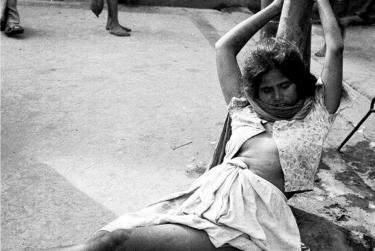 Pakistan was to combine these aforementioned elements into horrifying results in 1971. Indeed the freedom struggle in Bangladesh anticipated what Serb forces would perpetrate on Bosnian Muslim women from 1992 to 1995.
Pakistan was to combine these aforementioned elements into horrifying results in 1971. Indeed the freedom struggle in Bangladesh anticipated what Serb forces would perpetrate on Bosnian Muslim women from 1992 to 1995.
Over two decades before the atrocities on Muslims in Bosnia, the Muslims of East Pakistan faced similar attempts at genocide, ethnic cleansing, rape in order to destroy national identity, rape in order to supply sex slaves to the Pakistan military, and above all rape in order to impregnate the inferior race with the seed of a master race.
The parallels with the lebensborn programme, comfort women and the rapes in Bosnia are disturbingly familiar. But this was done by the Pakistan army and its local collaborators on largely fellow Muslims, with support from that leader of the Free World, the United States.
 The attempts by East Pakistan to free itself from the grip of a neo-colonial master in the form of West Pakistan, led to brutal military crackdown and genocide by mainly Punjabi and Pashtun army units sent by Islamabad in March 1971.
The attempts by East Pakistan to free itself from the grip of a neo-colonial master in the form of West Pakistan, led to brutal military crackdown and genocide by mainly Punjabi and Pashtun army units sent by Islamabad in March 1971.
Bengalis were seen as just darker-skinned effeminate Hindu converts, the diametric opposite of the lighter-skinned martial races of Punjab and the North-West Frontier. Urdu was pushed as the Muslim language, while Bengali again was seen as something Hindu. The authorities of the West viewed the Bengali Muslims in the East as “too Bengali” and their application of Islam as “inferior and impure”, and this made them unreliable. To this extent the West began a strategy to forcibly assimilate the Bengalis culturally.
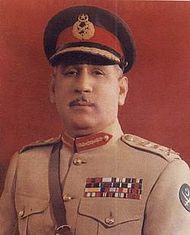 While Tikka Khan’s Operation Searchlight targeted the Hindu minority, Muslim intellectuals and teachers were also caught in its deadly grip and marked for liquidation. Khan said—when reminded on 27 March 1971 that he was in charge of a Bengali majority province—”I will reduce this majority to a minority”. He added ominously: “Pehle inko Mussalman karo” (First, make them Muslim), which meant rape by members of the master race from West Pakistan.
While Tikka Khan’s Operation Searchlight targeted the Hindu minority, Muslim intellectuals and teachers were also caught in its deadly grip and marked for liquidation. Khan said—when reminded on 27 March 1971 that he was in charge of a Bengali majority province—”I will reduce this majority to a minority”. He added ominously: “Pehle inko Mussalman karo” (First, make them Muslim), which meant rape by members of the master race from West Pakistan.
Indian journalist Amita Malik, reporting from Bangladesh following the Pakistan armed forces surrender, wrote that one West Pakistani soldier said: “We are going. But we are leaving our seed behind”. Major General Khadim Hussain Raja wrote in his book that Niazi, in presence of Bengali officers would say ‘Main iss haramzadi qom ki nasal badal doonga (I will change the race of the Bengalis)’.
A witness statement to the commission read “The troops used to say that when the Commander (Lt Gen Niazi) was himself a raper (sic), how could they be stopped?” The US based Women Under Siege Project of the Women’s Media Center have reported the girls as young as 8 and women as old as 75 were detained in Pakistan military barracks, and where they were victims of mass rape which sometimes culminated in mass murder.
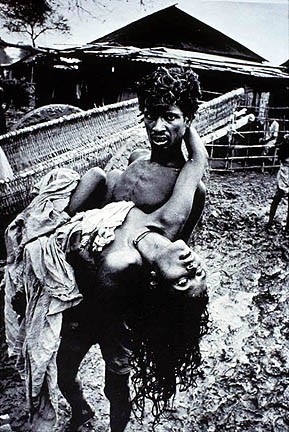 The report was based on interview with survivors. Australian Doctor Geoffrey Davis was brought to Bangladesh by the United Nation and International Planned Parenthood Federation to carry out late term abortions on rape victims. He was of the opinion that the 200,000 to 400,000 rape victims were an underestimation. On the actions of Pakistan army he said:
The report was based on interview with survivors. Australian Doctor Geoffrey Davis was brought to Bangladesh by the United Nation and International Planned Parenthood Federation to carry out late term abortions on rape victims. He was of the opinion that the 200,000 to 400,000 rape victims were an underestimation. On the actions of Pakistan army he said:
“They’d keep the infantry back and put artillery ahead and they would shell the hospitals and schools. And that caused absolute chaos in the town. And then the infantry would go in and begin to segregate the women. Apart from little children, all those were sexually matured would be segregated. And then the women would be put in the compound under guard and made available to the troops … Some of the stories they told were appalling. Being raped again and again and again. A lot of them died in those [rape] camps. There was an air of disbelief about the whole thing. Nobody could credit that it really happened!”
The mass rapes during the nine-month long conflict stood between 200,000 and 400,000. During the war, a fatwa in Pakistan declared that the Bengali ‘freedom fighters’ were Hindus and that their women could be taken as the ‘booty of war’. Muslim religious leaders publicly declared that the Bengali women were ‘gonimoter maal’ (war booty) and thus they openly supported the rape of Bengali women by the Pakistani Army. The soldiers of the Pakistan Army and razakars also kept Bengali women as sex-slaves inside the Pakistani Army’s camps, and many became pregnant.
The majority of the war babies were adopted in the Netherlands and Canada as the state wished to remove the reminders of Pakistan from the newly formed nation. Bangladeshi government’s figure for these results of rape is 70,000. After the conflict, the Pakistani government decided on a policy of silence regarding the rapes.
Bangladeshi authorities claim that as many as 3 million people were killed in the ensuing genocide, at the hands of Pakistani soldiers and their local collaborators in the al-Shams, al-Badr and Razakar militias. According to R. J. Rummel, professor of political science at the University of Hawaii, writing in 1994:
The genocide and gendercidal atrocities were also perpetrated by lower-ranking officers and ordinary soldiers. These “willing executioners” were fueled by an abiding anti-Bengali racism, especially against the Hindu minority. “Bengalis were often compared with monkeys and chickens. Said General Niazi, ‘It was a low lying land of low lying people.’ The Hindus among the Bengalis were as Jews to the Nazis: scum and vermin that [should] best be exterminated. As to the Moslem Bengalis, they were to live only on the sufferance of the soldiers: any infraction, any suspicion cast on them, any need for reprisal, could mean their death. And the soldiers were free to kill at will. The journalist Dan Coggin quoted one Pakistani captain as telling him, “We can kill anyone for anything. We are accountable to no one.” This is the arrogance of Power.
Pakistan’s Lebensraum
Germany conquered territory to the east in order to fulfill its imperial ambitions and racial utopia, that of lebensraum or living space for the German masses. The inferior Slavs would be despoiled, turned into illiterate helots in order to serve the Aryan masters. The problem with East Pakistan was that it contained the majority of the population in this supposed paradise created by Jinnah. Because the land area was smaller, it was thus more densely populated. Bangladesh was never going to be the lebensraum for Pakistan’s martial master race of Punjabi and Pashtuns stock.
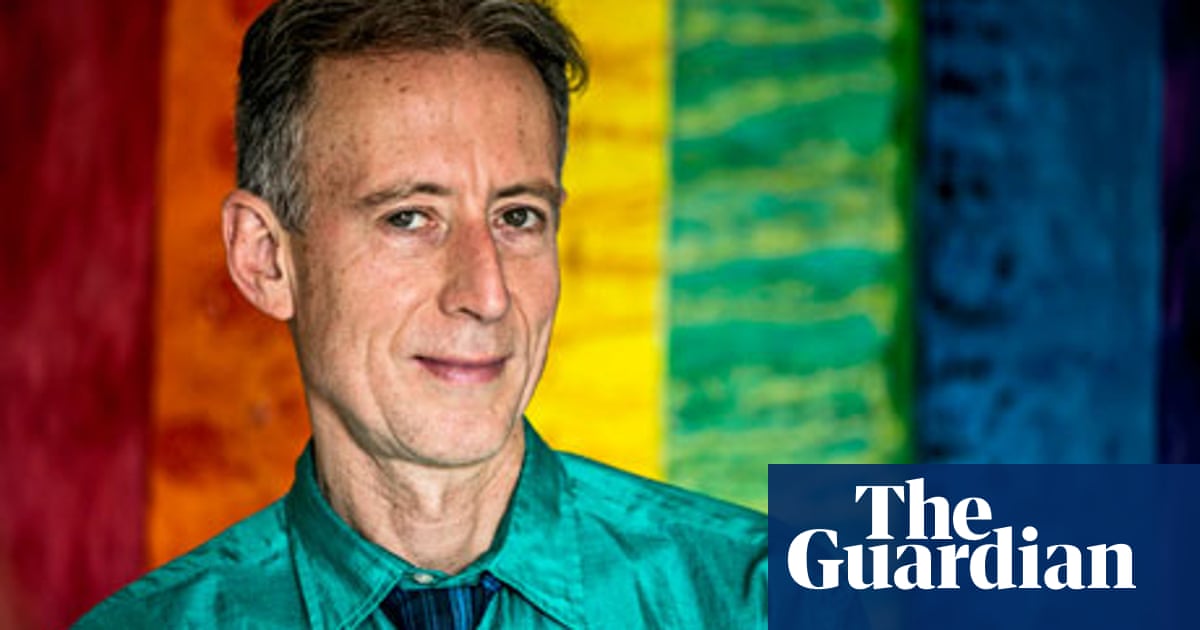 A genocide on the scale of Nazi Germany and Imperial Japan was too obvious no matter how much their American ally tried to ignore the obvious. But Pakistan after 1971 had a large areas of sparse population. This was especially the case with Baluchistan. To cover up its systematic human rights abuses, the Pakistani government prohibits international organizations and independent aid agencies from operating in Baluchistan.
A genocide on the scale of Nazi Germany and Imperial Japan was too obvious no matter how much their American ally tried to ignore the obvious. But Pakistan after 1971 had a large areas of sparse population. This was especially the case with Baluchistan. To cover up its systematic human rights abuses, the Pakistani government prohibits international organizations and independent aid agencies from operating in Baluchistan.
On 15 August 2007, Peter Tatchell wrote in the Guardian:
On August 11 1947, the British protectorate of Baluchistan declared its independence. Three days later, Pakistan also became an independent nation. But the two states coexisted for less than a year.
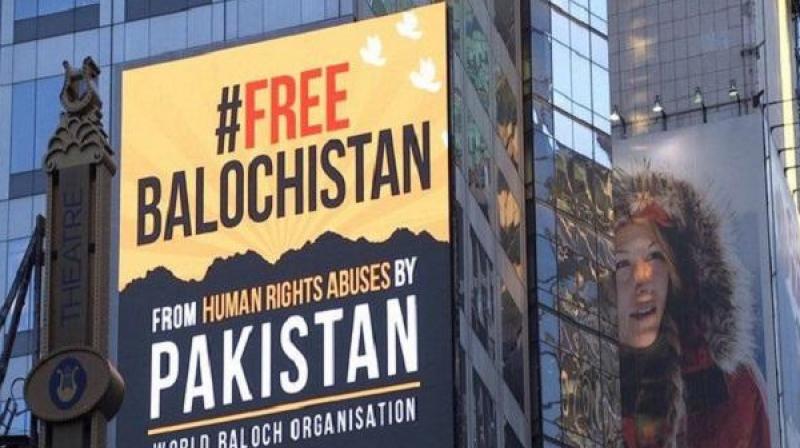 In March 1948, Pakistan invaded and seized Baluchistan. Under threat of imprisonment, the traditional Baluch leader, the Khan of Kalat, Mir Ahmed Yar Khan, was pressured to sign a treaty of integration. This treaty was, however, never agreed by the Baluchistan parliament and never mandated by the Baluch people.
In March 1948, Pakistan invaded and seized Baluchistan. Under threat of imprisonment, the traditional Baluch leader, the Khan of Kalat, Mir Ahmed Yar Khan, was pressured to sign a treaty of integration. This treaty was, however, never agreed by the Baluchistan parliament and never mandated by the Baluch people.
Both houses of the Baloch parliament rejected incorporation. Less than a year later, Jinnah ordered the invasion of Baluchistan and annexed the entire territory. After much indecision and under duress from Jinnah, Baloch leader Mir Ahmad Yar Khan Ahmadzai was forced to sign an incorporation agreement without a mandate from his people. He acceded to Pakistan on 27 March 1948. In July his brother, Prince Abdul Karim took refuge in Afghanistan to wage an unconventional attacks against Pakistan.
However, he ultimately surrendered to Pakistan in 1950. Pakistan deposed the traditional tribal leadership and the historic Khanate of Kalat ceased to exist in 1955. In 1958, Ahmad Yar Khan, organised a rebellion to secede from West Pakistan.
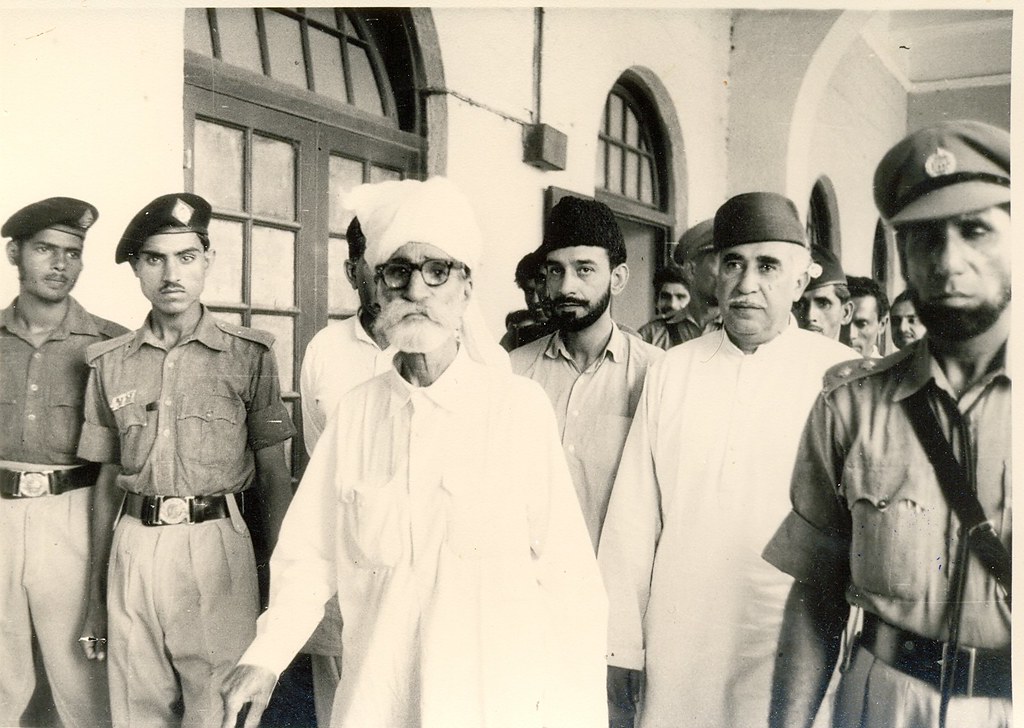 The Pakistan Army took control of the Kalat palace and arrested the Khan for sedition on October 6, 1958. The next day, the president Iskandar Mirza declared martial law.
The Pakistan Army took control of the Kalat palace and arrested the Khan for sedition on October 6, 1958. The next day, the president Iskandar Mirza declared martial law.
Nawab Nauroz Khan took up arms in resistance to the One Unit policy, which decreased government representation for tribal leaders, from 1958 to 1959. He and his followers started a guerrilla war against Pakistan, and were arrested, charged with treason, and imprisoned in Hyderabad.
Five of his family members, sons and nephews, were subsequently hanged on charges of treason and aiding in the murder of Pakistani troops. Nawab Nauroz Khan later died in captivity. Sher Muhammad Bijrani Marri led insurgency against Pakistan from 1963 to 1969, against what they felt was exploitation of the region’s natural resources, but treating the Baluch as colonial subjects. The Army retaliated by destroying vast areas of the Marri tribe’s land. This insurgency ended in 1969, with the Baloch separatists agreeing to a ceasefire.
The conflict flared up again between 1973 to 1978. President Zulfikar Ali Bhutto dismissed the elected provincial government of Balochistan, on the pretext that arms had been discovered in the Iraqi Embassy ostensibly for Baloch rebels. The ensuing protest against the dismissal of the duly elected government also led to calls for Balochistan’s secession, met by Bhutto’s ordering the Pakistan Army into the province led by the war criminal Tikka Khan, the Butcher of Bengal. America’s other ally Iran also helped Pakistan to crush the Baluch freedom movement. The conflict took the lives of 3,300 Pakistani troops, 5,300 Baloch, and thousands of civilians. Ironically it ended when Zia overthrew Bhutto in 1977 and declared martial law, with general amnesty declared by military governor Rahimuddin Khan.
 In 2005, the Baluch political leaders Nawab Akbar Khan Bugti and Mir Balach Marri presented a 15-point agenda to the Pakistan government. Their stated demands included greater control of the province’s resources and a moratorium on the construction of military bases. In August 2006, Bugti, was killed in fighting with the Pakistan Army, in which at least 60 Pakistani soldiers and 7 officers were also killed.
In 2005, the Baluch political leaders Nawab Akbar Khan Bugti and Mir Balach Marri presented a 15-point agenda to the Pakistan government. Their stated demands included greater control of the province’s resources and a moratorium on the construction of military bases. In August 2006, Bugti, was killed in fighting with the Pakistan Army, in which at least 60 Pakistani soldiers and 7 officers were also killed.
Pakistan’s government had charged him with responsibility of a series of deadly bomb blasts and a rocket attack on President Pervez Musharraf. As a result, support for the insurgency surged. n December 2005, Sardar Ataullah Mengal, Baluchistan’s former chief minister, reported that Pakistani troops had used chemical weapons against Baluch tribespeople.
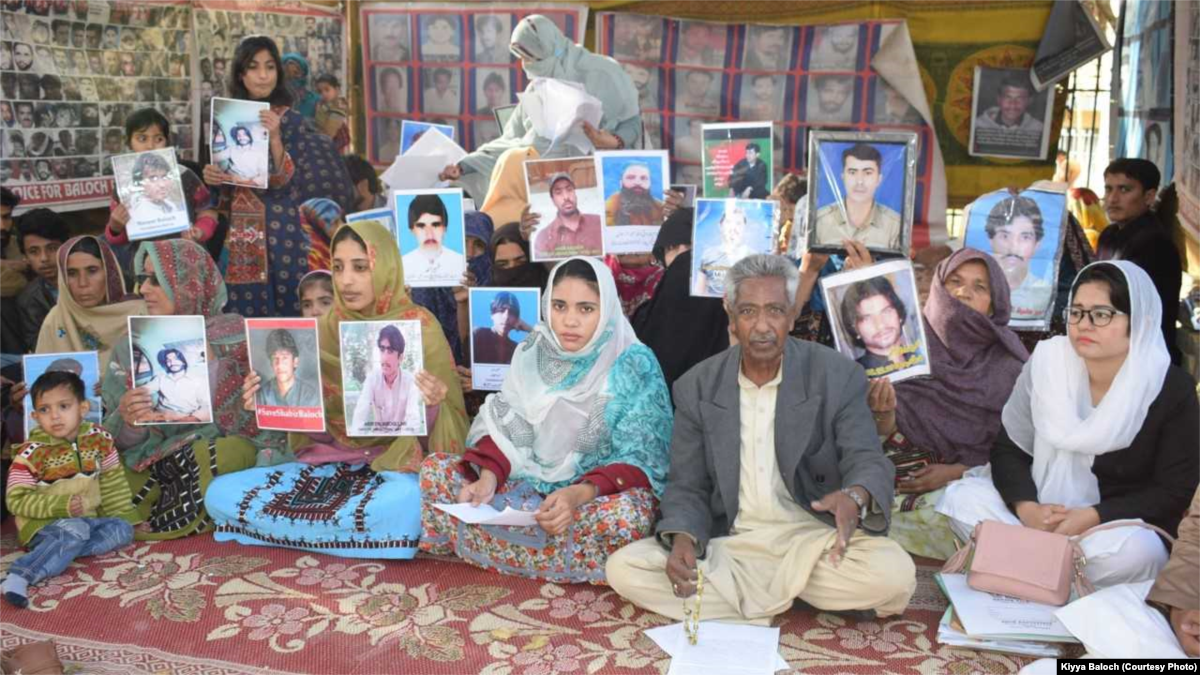 From 2018 Pakistan used jihadist terrorists to crush Baluch demands for freedom. Pakistani academics and journalists in the United States have been approached by Inter-Services Intelligence spies, who threatened them not to speak about the insurgency in Baluchistan, as well as human rights abuses by the Pakistani Army or else their family would be harmed.
From 2018 Pakistan used jihadist terrorists to crush Baluch demands for freedom. Pakistani academics and journalists in the United States have been approached by Inter-Services Intelligence spies, who threatened them not to speak about the insurgency in Baluchistan, as well as human rights abuses by the Pakistani Army or else their family would be harmed.
Economic inequality, and Baluchistan’s status as a “neglected province where a majority of population lacks amenities” is a dimension in the conflict. Since the mid-1970s Balochistan’s share of Pakistan’s GDP has dropped from 4.9 to 3.7%. It suffers from the highest infant and maternal mortality rate, the highest poverty rate, and the lowest literacy rate in Pakistan. Meanwhile its elite own huge areas of land as well as other business interests. The gas revenues have not helped the masses or built up effective infrastructure.
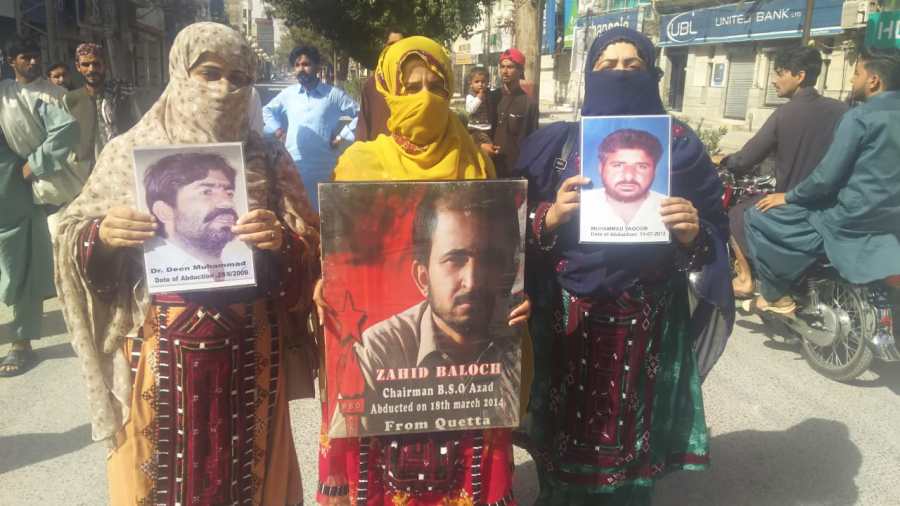 Skilled labour is mainly Pashtuns and Punjabis, with few of the local Baluch involved. In addition the Baluch fear becoming a minority in their exploited homeland as 4 million refugees from Afghanistan arrived and settled in the region which has resulted in substantial demographic imbalance.
Skilled labour is mainly Pashtuns and Punjabis, with few of the local Baluch involved. In addition the Baluch fear becoming a minority in their exploited homeland as 4 million refugees from Afghanistan arrived and settled in the region which has resulted in substantial demographic imbalance.
Many Baluch perceive the occupying Pakistan army as dominated by Punjabis and working in the interests of the Punjabis (who make up 45% of Pakistan’s population) and lacking Baluch representation. Pakistan’s Inter-Services Intelligence (ISI) agency has been accused of massive human rights abuses in Balochistan by Human Rights Watch, with the enforced disappearance of hundreds of nationalists and activists. In 2008 alone, an estimated 1102 people were disappeared from the region. Torture is widespread. An increasing number of bodies are being found on roadsides, having been shot in the head.
On 9 September 2015, Senator Jehanzeb Jamaldini told lawmakers in a meeting of the Senate’s Standing Committee on Interior that Islamabad was deliberately making the Baluch a minority in the exploited province. The figures of the Pakistan Statistics Department revealed that only 35% of the province’s inhabitants speak Balochi, 25% Pashto, around 20% Brahui, and the rest speak Punjabi, Sindhi and Urdu.
 In 2017 Balochistan National Party (BNP) President and former chief minister Sardar Akhtar Mengal has claimed that Balochistan is no longer treated as a federating unit of Pakistan and its status has been reduced to that of a colony. Despite being Pakistan’s largest province, it is home to only about seven million people out of a total population of 190 million.
In 2017 Balochistan National Party (BNP) President and former chief minister Sardar Akhtar Mengal has claimed that Balochistan is no longer treated as a federating unit of Pakistan and its status has been reduced to that of a colony. Despite being Pakistan’s largest province, it is home to only about seven million people out of a total population of 190 million.
Many Baloch believe their province was forcibly incorporated into the new state of Pakistan.
The Balochistan Liberation Army, designated as a terrorist organisation by Pakistan and Britain, is the most widely known Baloch separatist group. Other separatist groups include Lashkar-e-Balochistan and the Baloch Liberation United Front.
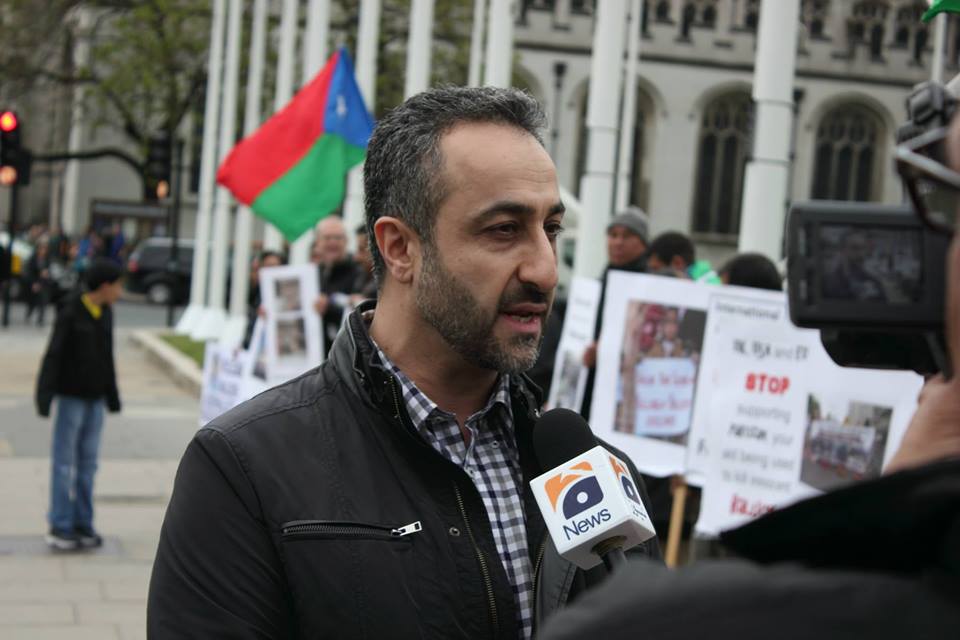 Pakistan’s foreign allies, obsessed with hunting Islamists, have ignored the problem. “We are the most secular people in the region, and still we are being ignored,” says Noordin Mengal, who represents Balochistan on the UN Human Rights Council in Geneva. In October 2016, Hyrbyair Marri, the exiled leader of the Free Balochistan Movement (FBM), who now lives in London, commented:
Pakistan’s foreign allies, obsessed with hunting Islamists, have ignored the problem. “We are the most secular people in the region, and still we are being ignored,” says Noordin Mengal, who represents Balochistan on the UN Human Rights Council in Geneva. In October 2016, Hyrbyair Marri, the exiled leader of the Free Balochistan Movement (FBM), who now lives in London, commented:
“It is becoming pretty much clear that Pakistan’s main target is the educated and politically conscious section of Baloch society, which includes students, teachers, lawyers, and doctors.”
The Pakistani government has identified the secular Baloch as a potent threat to Pakistani identity, which is a toxic cocktail of hard-line Punjabi nationalism and Sunni Islamic fundamentalism. “They have radicalized Pashtu areas to counter secular nationalism and they are doing it in Baluchistan,” Marri warns.
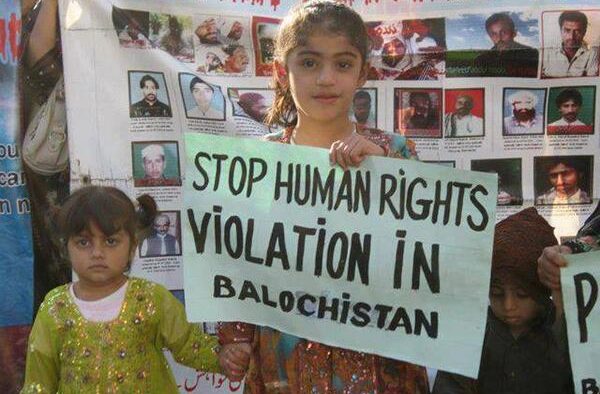 In order to dilute secularism and Baluch identity, Islamabad has deliberately settled Punjabis in Baluchistan, to the extent that they outnumber Baluch in Quetta. It then pours millions into madrasas that teach a hard-line interpretation of Islam, providing fertile recruiting grounds for extremist groups.
In order to dilute secularism and Baluch identity, Islamabad has deliberately settled Punjabis in Baluchistan, to the extent that they outnumber Baluch in Quetta. It then pours millions into madrasas that teach a hard-line interpretation of Islam, providing fertile recruiting grounds for extremist groups.
According to Marri, Pakistan “has been working hand to hand with religious extremists for decades to counter secular national movements. They have also attacked Hindus and Shiite minorities in Baluchistan in order to destroy the secular fabric of our society.” Like Native Americans they are being made stateless in their own homeland. Tatchell:
“Cultural imperialism is another weapon in Pakistan’s bid to crush Baluchistan. Punjabi supremacists believe they have a sacred duty to “civilise” the “uncivilised” Baluch. They have imposed an alien language, Urdu, on the Baluchi-speaking people. In a similar fashion to the tactics of the apartheid regime in South Africa, which forced black children to be schooled in Afrikaans, Islamabad has dictated that Urdu is the compulsory language of instruction in Baluch educational institutions.”
The parallels with suppressing Bengali back when Pakistan was formed are obvious.
Pakistan also rents out Baluchistan to its powerful Chinese allies, with the Baloch denied the benefits of their own national wealth. While Pakistan and China make huge profits in Baluchistan, the local people suffer extreme hardship. Despite its mineral wealth, Baluchistan is the poorest region of Pakistan. Much of the population lives below the poverty line with limited or no access to education, jobs, electricity, and clean water. Many are forced out of their homes without due process or compensation.
 US Congressman Dana Rohrabacher introduced a bill in the House of Representatives in 2012, which was co-sponsored by another two congressmen, Louie Gohmert and Steve King, simply stating that the Balochi nation has a historic right to self-determination.
US Congressman Dana Rohrabacher introduced a bill in the House of Representatives in 2012, which was co-sponsored by another two congressmen, Louie Gohmert and Steve King, simply stating that the Balochi nation has a historic right to self-determination.
On 16 August 2016, Indian prime minister Narendra Modi said that Pakistan “shall have to answer to the world for the atrocities committed by it against people in Baluchistan.” In this he was supported by Bangladesh. Hasanul Haque Inu, the visiting Minister of Information in the Sheikh Hasina government, said Baluchistan was facing the brunt of Pakistan’s military establishment, which “targeted” the Bengalis in East Pakistan in 1971 before the creation of Bangladesh:
“Pakistan has a very bad track record as far as addressing aspiration of nationalities is concerned. They learnt nothing from the defeat of 1971 and continued to practise the same policy of repression and are now targeting the Baloch nationalists,”
Modi was also supported by Marri in Baluchistan:
“He is the first prime minister of a sovereign country who has openly expressed his concerns against human rights violations in Balochistan. His statement is a courageous step and shows his statesmanship.”
Kashmir Oppressed by Pakistan Reich
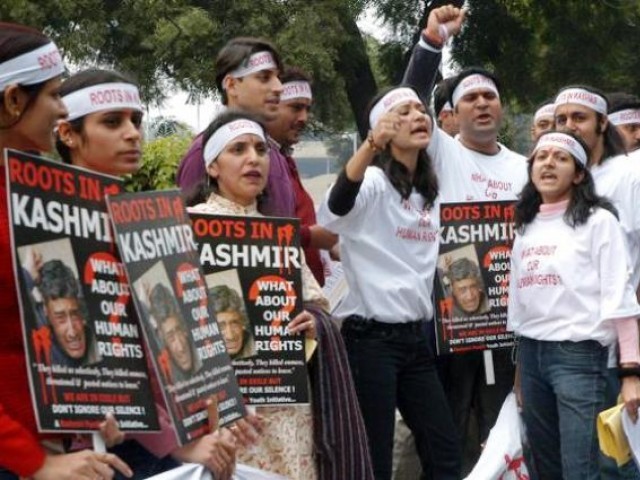 Kashmir is integral to the identity of Pakistan as much as Poland was to the Third Reich. The so called Azaad Kashmir is anything but free. As with Baluchistan precious little is heard about this part of the occupied former princely state. Tight controls on freedom of expression have been a hallmark of government policy in Azad Kashmir.
Kashmir is integral to the identity of Pakistan as much as Poland was to the Third Reich. The so called Azaad Kashmir is anything but free. As with Baluchistan precious little is heard about this part of the occupied former princely state. Tight controls on freedom of expression have been a hallmark of government policy in Azad Kashmir.
This has been helped by the western allies of this terrorist state focusing all their attention on India, and ignoring the genocide of Hindus in Kashmir.
Pakistan has prevented the creation of independent media in the territory it illegally occupies through bureaucratic restrictions and coercion. Under Azad Kashmir’s constitution, which Pakistan enforced in 1974, election candidates are “prescreened” to ensure that only those who support Kashmir’s union with Pakistan can contest elections. Anyone who wants to take part in public life in Azad Kashmir has to sign a pledge of loyalty to Pakistan, while anyone who publicly supports or peacefully works for an independent Kashmir faces persecution.
While militant organizations promoting the incorporation of Indian-administered Jammu and Kashmir state into Pakistan have had free rein to propagate their views, groups promoting an independent Kashmir find their speech sharply, sometimes violently curtailed. The region is almost completely Muslim, with Hindu and Sikh minorities absent. This was emulated in 1990 in Indian Kashmir itself when Pakistan backed jihadis forced out the indigenous community at gunpoint under threat of rape, massacre or forcible conversion to Islam.
But the 1989-91 militants were overwhelmingly Kashmiris from the central valley, many from Srinagar. in the early years of the Kashmiri rebellion against Indian control, the indigenous Jammu Kashmir Liberation Front (JKLF) remained the engine of the Kashmiri nationalist movement and in control of it. With ISI control the JKLF and similar secessionist groups were sidelined in favour of
hardline Islamic outfits such as Hizbul-Mujahedin, Harkat-ul-Ansar, Jamiat-ul-Mujahedin and Al-Jihad which were incorporated into the United Jihad Council
The Azad Kashmir government regularly bans books that it considers to be prejudicial to the “ideology of the state’s accession to Pakistan. There are also restrictions on radio and newspapers. Human Rights Watch has learned that there are large numbers of Kashmiri detainees being held for long periods by the Pakistani military in secret detention facilities in Azad Kashmir and in Pakistan.
In June 2018 a report by the Office of the United Nations High Commissioner for Human Rights (OHCHR) dealing with the human rights situation in PoK said people in ‘Azad Jammu and Kashmir’ and ‘Gilgit-Baltistan’, which are in the control of Pakistan, “do not enjoy” all the rights and protections available under Pakistan Constitution. The OHCHR also referred to the acquisition of land for the controversial China Pakistan Economic Corridor in Gilgit-Baltistan where people were “forcibly evicted” without any consultation or giving proper information on the move that affected their lives and livelihood. Another point highlighted in the report was the “institutional discrimination” against the Ahmaddiya community in PoK by treating them as non-Muslims.
In February 2019, the US-based independent watchdog Freedom House has asserted that the Indian state of Jammu and Kashmir enjoys more freedom than Pakistan and Pakistan-Occupied Kashmir (PoK) contrary to allegations levelled by Imran Khan-led government in Pakistan.
The Gilgit-Baltistan region was created by Pakistan as a separate territory out of Jammu and Kashmir.
Pakistan has since changed the demography in Gilgit and Baltistan, especially by diluting the formerly dominant Shia element in the population. In July 2019, the United Kashmir People’s National Party (UKPNP) on Wednesday urged the United Nations 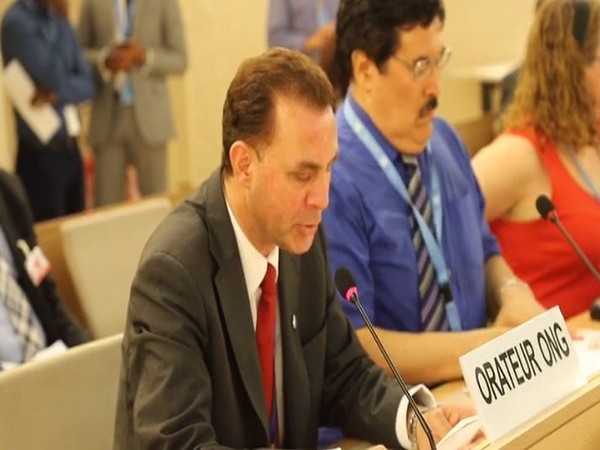 Human Rights Council (UNHRC) to initiate action to make Pakistan accountable for human rights violations in Gilgit-Baltistan, and PoK. Secretary of Foreign Affairs of UKPNP, Jamil Maqsood, said:
Human Rights Council (UNHRC) to initiate action to make Pakistan accountable for human rights violations in Gilgit-Baltistan, and PoK. Secretary of Foreign Affairs of UKPNP, Jamil Maqsood, said:
“The constant and persistent violations of human rights in Pakistan occupied Kashmir (PoK) continues unabated. The Pakistani military engages in land grabbing, oppressive witch hunts, censorship of the media and represses freedom of expression and assembly in its peripheries.”
As well as exploitation of natural resources, extrajudicial killings, disappearances, and discrimination against any opposition to Pakistan has become a feature of everyday life. He was also concerned about state support to terrorists such as the Lashkar-e-Taiba, Jaish-e-Muhammad, and Hizbul Mujahedeen.
Senge H Sering, an activist from Gilgit-Baltistan and the Director of the Institute of Gilgit Baltistan Studies in Washington DC, spoke at the 42nd session of the United Nations Human Rights Council in Geneva in September 2019:
“Gilgit-Baltistan is a part of India. The members of the United Nations need to realise that Pakistan has become a huge stumbling block for the last 70 years.”
He said Islamabad was just pretending solidarity with the people of Gilgit-Baltistan and Kashmir. Altaf Hussain, founder of Muttahida Qaumi Movement (MQM) and now exiled in London, has accused Pakistan military of committing atrocities in PoK and demanded that that UN observers should visit Pakistan, not India. He said Pakistan, instead of raking up alleged human rights abuses by India, should first give answers about the killings in Balochs and Pashtuns in Pakistan.
Imran Goebbels Khan
In March 1933, Dr Goebbels boasted thus:
The best propaganda is that which, as it were, works invisibly, penetrates the whole of life without the public having any knowledge of the propagandistic initiative.
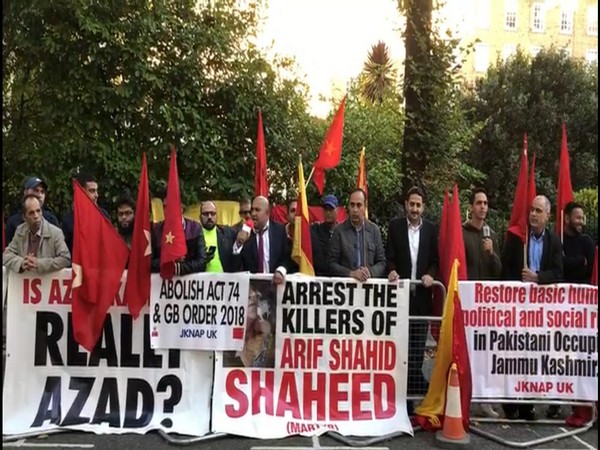 This is exactly what has happened in the discourse on Kashmir, and by extension the CAA which grants asylum in India to victims of religious persecution. There has been scant attention to demonstrations in Azad Kashmir which have been violently suppressed by the Pakistani occupiers. Hardly any attention is given to the Kashmiri Hindus forced out their ancestral homeland by Pakistan backed jihad terrorists.
This is exactly what has happened in the discourse on Kashmir, and by extension the CAA which grants asylum in India to victims of religious persecution. There has been scant attention to demonstrations in Azad Kashmir which have been violently suppressed by the Pakistani occupiers. Hardly any attention is given to the Kashmiri Hindus forced out their ancestral homeland by Pakistan backed jihad terrorists.
Instead the useful idiots of India, who go by the pompous appellations of pf ‘progressive’ and ‘secular’, refer to them as migrants and try to draw some moral equivalence between India and Pakistan.
This is fake news of the worst type. Where are the Hindu terrorists groups attacking Pakistan? They only exist in the mythology of anti-Hindu propagandists. Imran Khan calls India a fascist and Nazi state, when the very country he rules is based upon being land of the ‘pure’, and that means the impure non-Muslims have no place other than subhuman vermin to be oppressed at will.
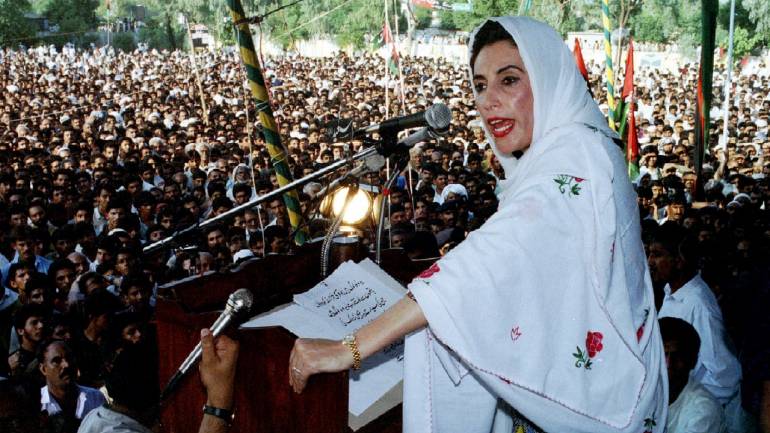 This lies at the very root of Pakistan. While the world vilifies Aung San Suu Kyi for ignoring the extermination of Rohingya Muslims in Myanmar, there was never such condemnation for that other Third World darling of the liberal chattering classes, Benazir Bhutto. Under this democratically elected prime minister, the Taliban formed and, helped by Pakistan’s intelligence service, swept across Afghanistan and later hosted Osama bin Laden.
This lies at the very root of Pakistan. While the world vilifies Aung San Suu Kyi for ignoring the extermination of Rohingya Muslims in Myanmar, there was never such condemnation for that other Third World darling of the liberal chattering classes, Benazir Bhutto. Under this democratically elected prime minister, the Taliban formed and, helped by Pakistan’s intelligence service, swept across Afghanistan and later hosted Osama bin Laden.
Pakistan backed jihadis ethnically cleansed Hindus from Kashmir. Her father caused the genocide in Bangladesh, yet was hailed as champion of the poor, a socialist and a democrat. That is because Pakistan was never set up for peaceful coexistence. It ignores the open suppression of Muslims by its ally and neighbour China. So why the focus on Kashmir? Because what irks Pakistan is not Kashmir but they very fact that India exists and ancient Hindu civilisation survives.
According to its original conception, Pakistan itself was to be larger than it turned out to be; it was to include Kashmir, Assam and Bengal in the East and Hyderabad and Malabar in the South and many independent Muslim states within the rest of the Indian territory. India, or whatever remained of India, was itself to be considered Dinia, an important Islamic concept. It was to be an area ripe for jihad and Islamisation.
In other words what is now India. Just as Hitler was not satisfied with Austria and Czechoslovakia, he then demanded Poland. We all know what happened next. He agreed with Stalin to carve up Poland and other parts of Europe. It was never enough. In December 1954, Churchill said:
An appeaser is one who feeds a crocodile — hoping it will eat him last.
His reference was to Chamberlain’s failed Munich Agreement which was supposed to stop Hitler causing another war. However Churchill did some appeasing himself by being instrumental in creating Pakistan as a western ally and as a means to weaken an independent India, which he hated in the extreme.
 How ironic, yet karmic, that the very ‘crocodile’ he created, and was fed by Eisenhower, Kissinger, Nixon, Reagan and Bush, has now come to eat those very western allies by being the headquarters of international jihad. Imran Khan does not just use fake news against India.
How ironic, yet karmic, that the very ‘crocodile’ he created, and was fed by Eisenhower, Kissinger, Nixon, Reagan and Bush, has now come to eat those very western allies by being the headquarters of international jihad. Imran Khan does not just use fake news against India.
Ultimately the rogue state he rules is not even just a threat to India. It is a threat to the very Britain which acted as midwife to Pakistan’s birth, and the USA which fed and raised it into the monster it now is.
Usman Khan killed 2 people and injured 3 in his knife attack on London Bridge on 29 November 2019. He had plans to build a jihad training camp in Azad Kashmir in order to launch attacks on India. Usman Khan was just one of many manifestations of this crocodile.
The idea of Pakistan was born in Britain, by the student Choudhry Rehmat Ali. It was fostered and brought into reality by a British prime minister and war hero Winston Churchill. It was became an international terrorists state under the Oxford educated Benazir Bhutto. Against all the one-sided BBC and other Hinduphobic mainstream media narrative against India’s stance on Kashmir and passing of the CAA, Usman Khan brought the nightmarish reality of the terrorist state created by Britain onto the streets of its capital city. No amount of fake news can mask that.

